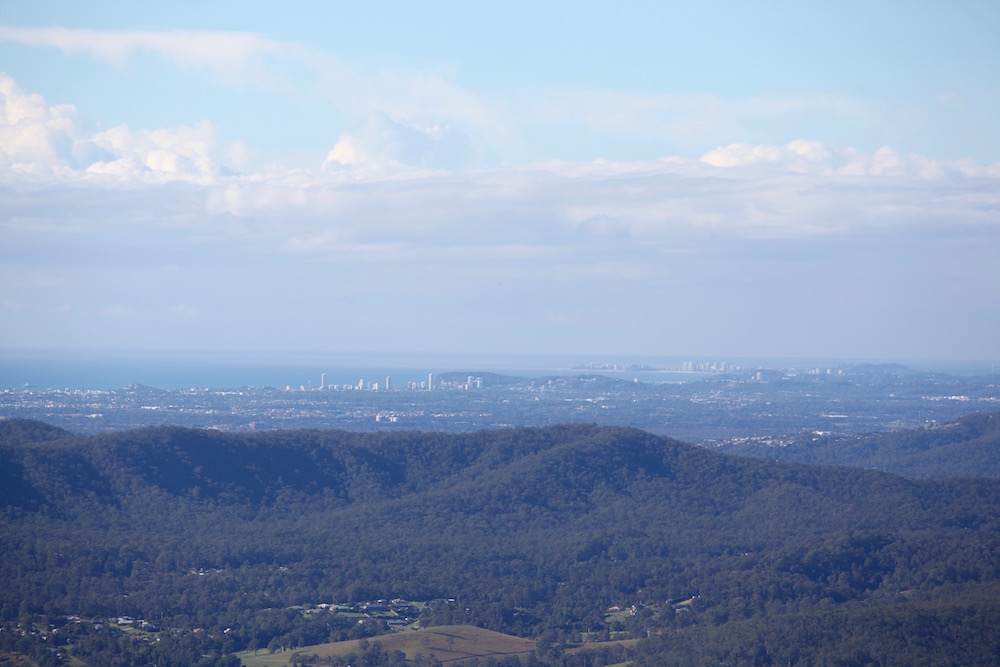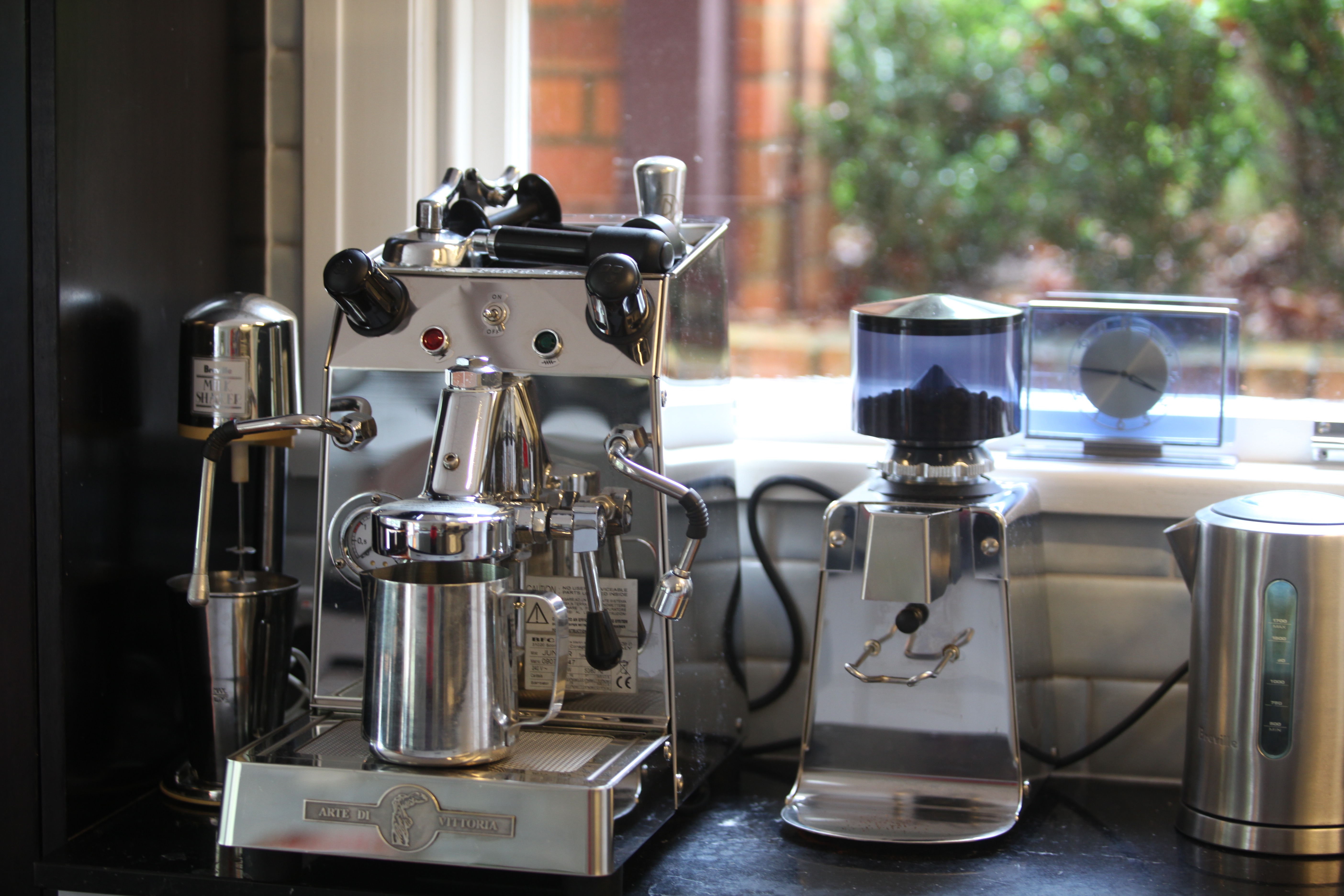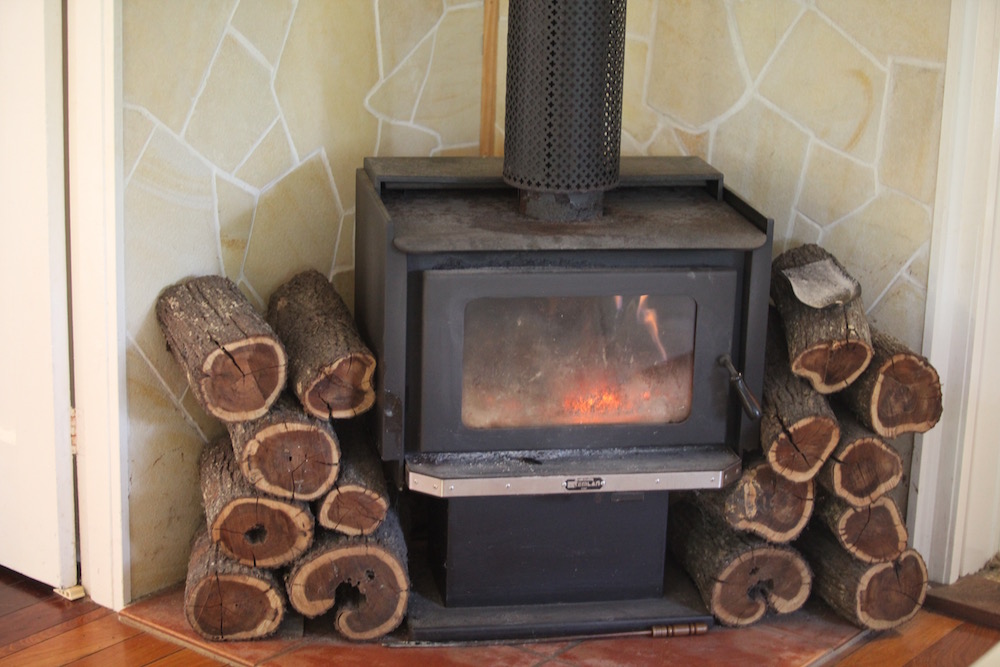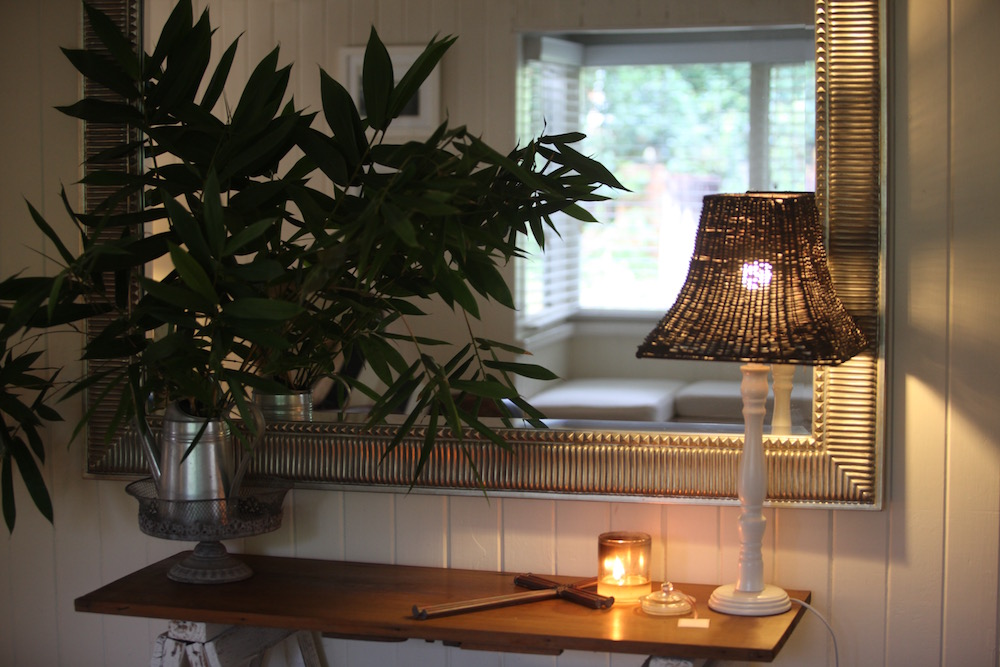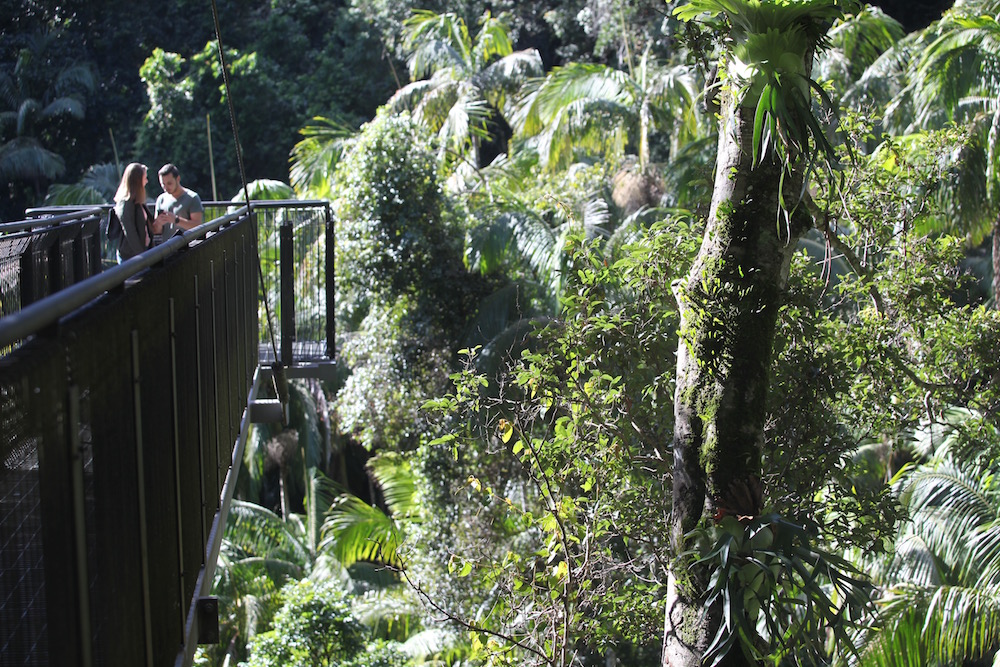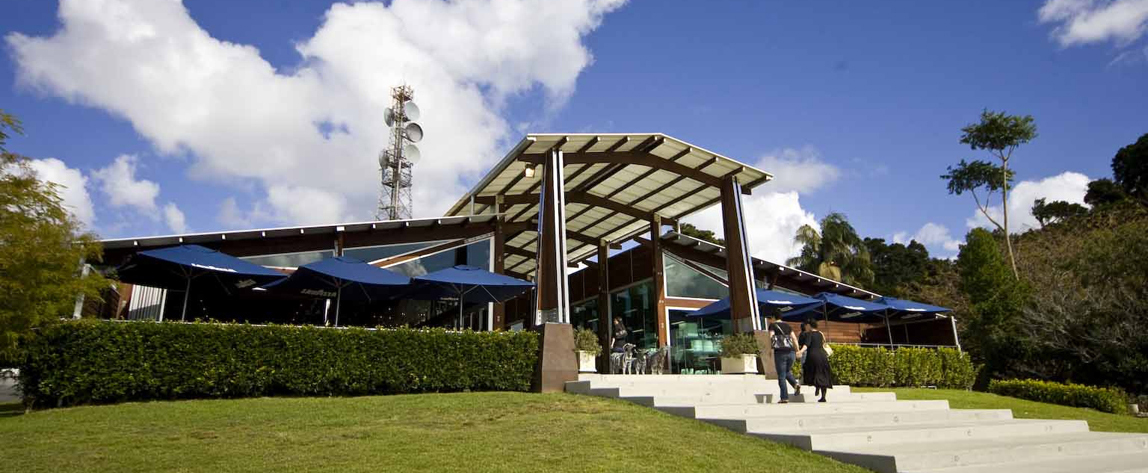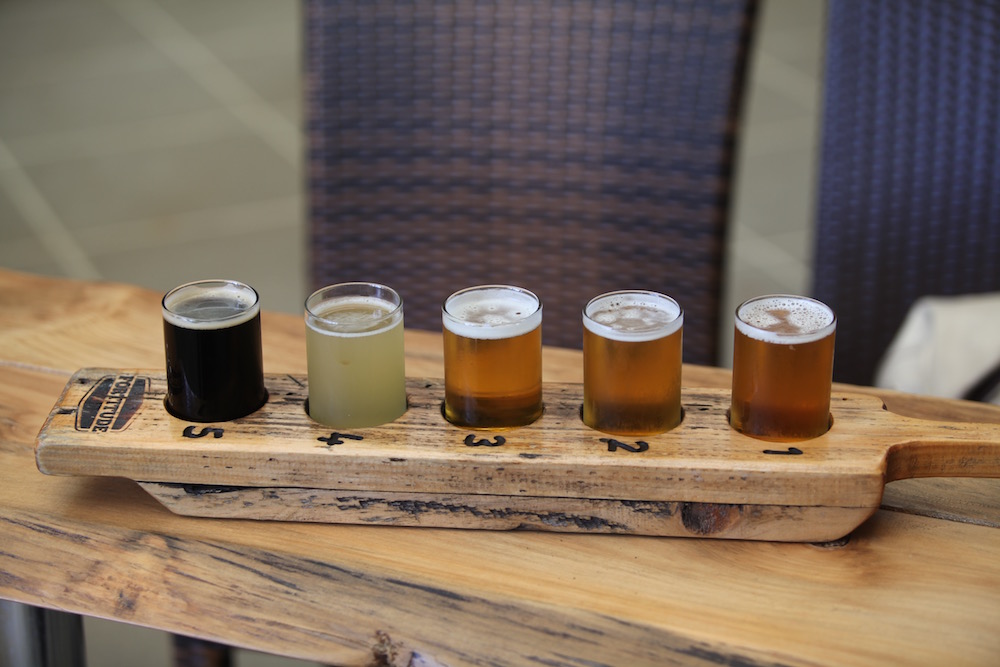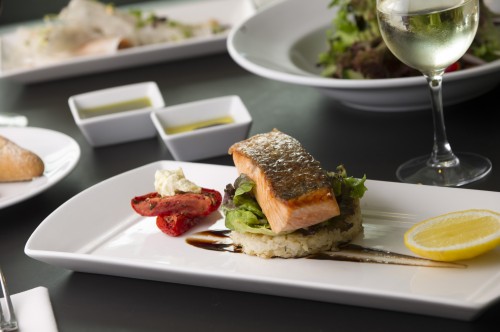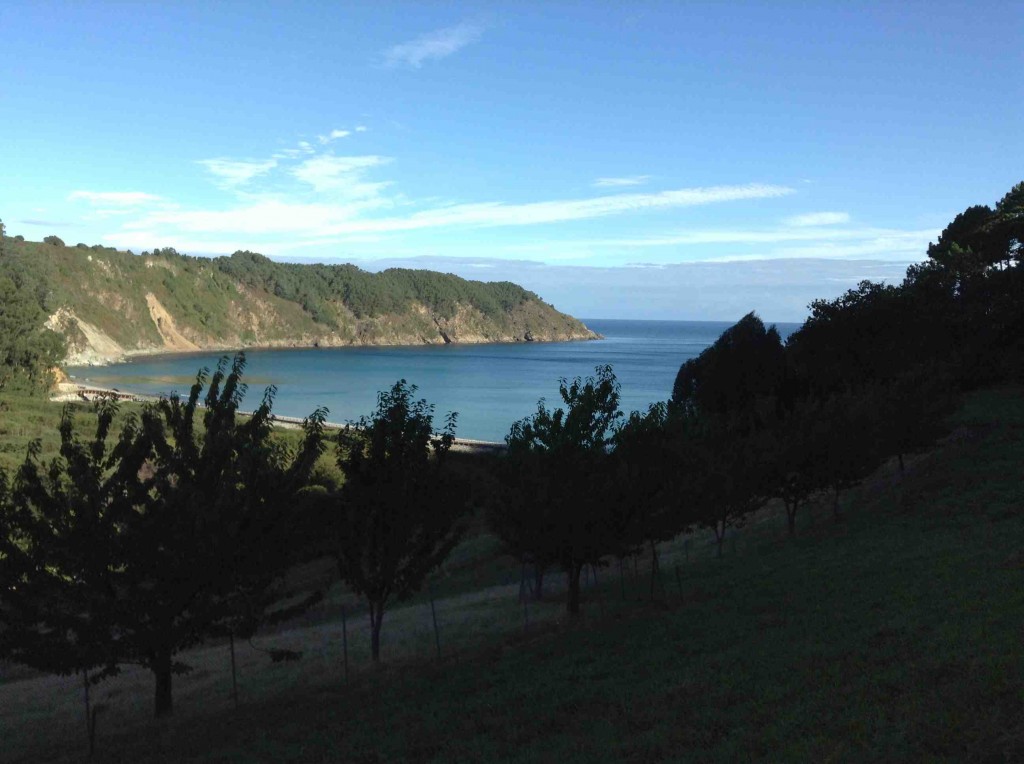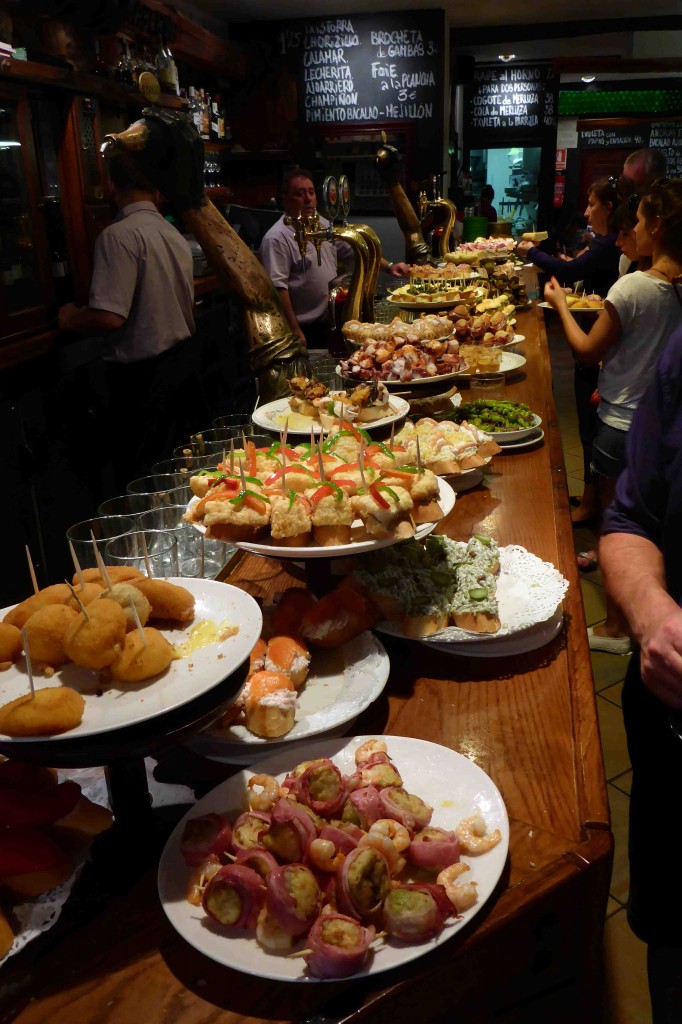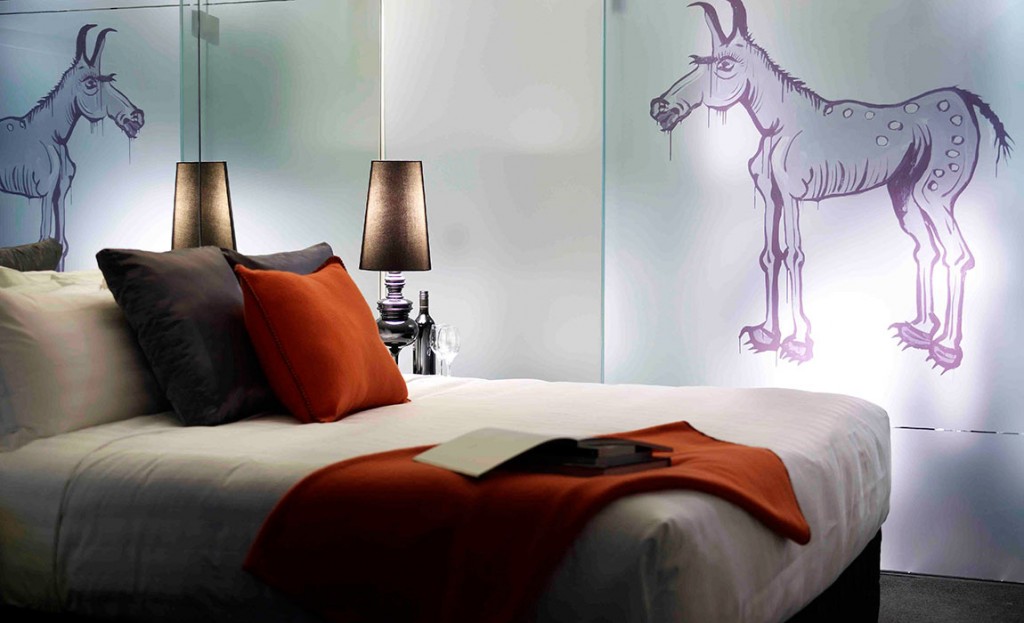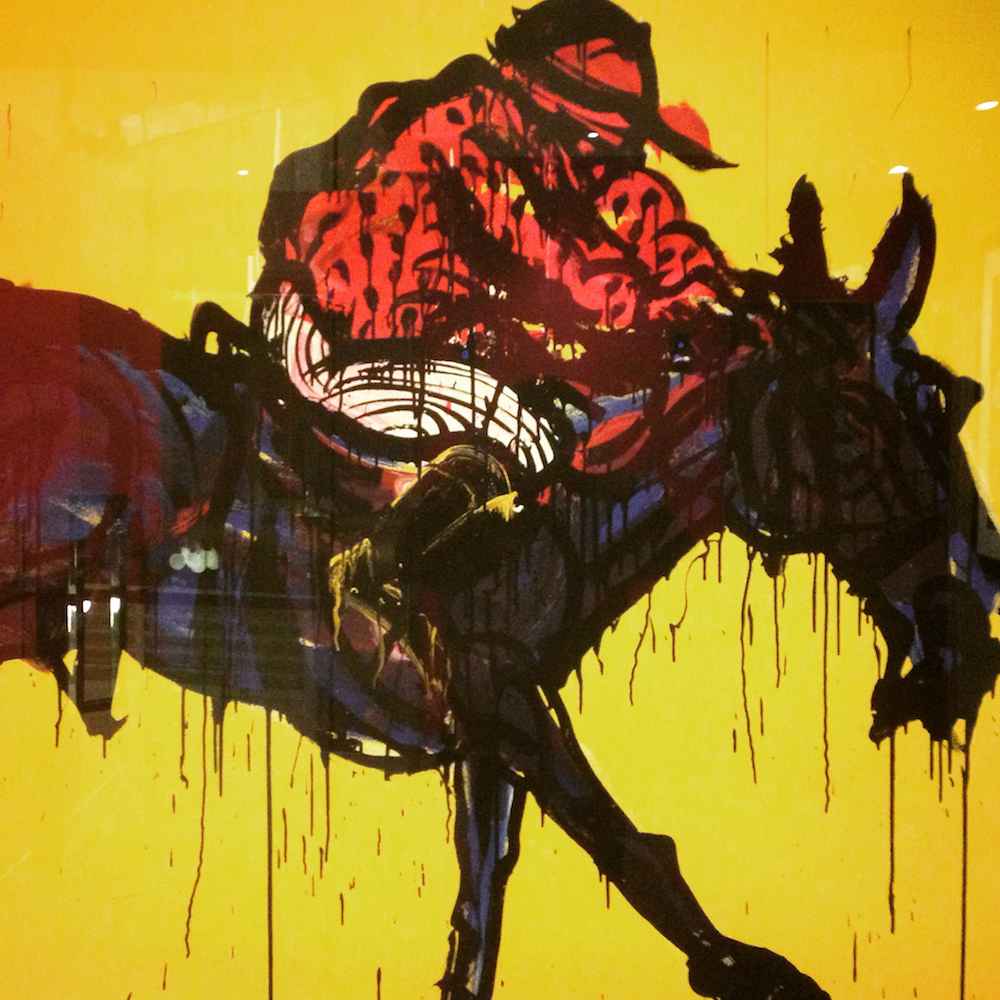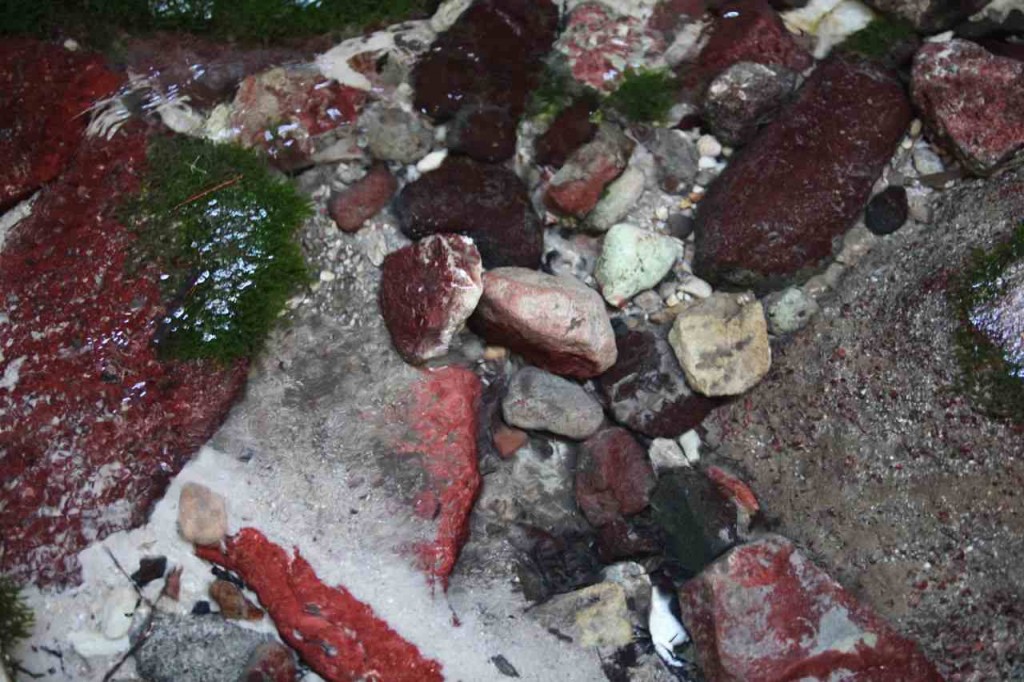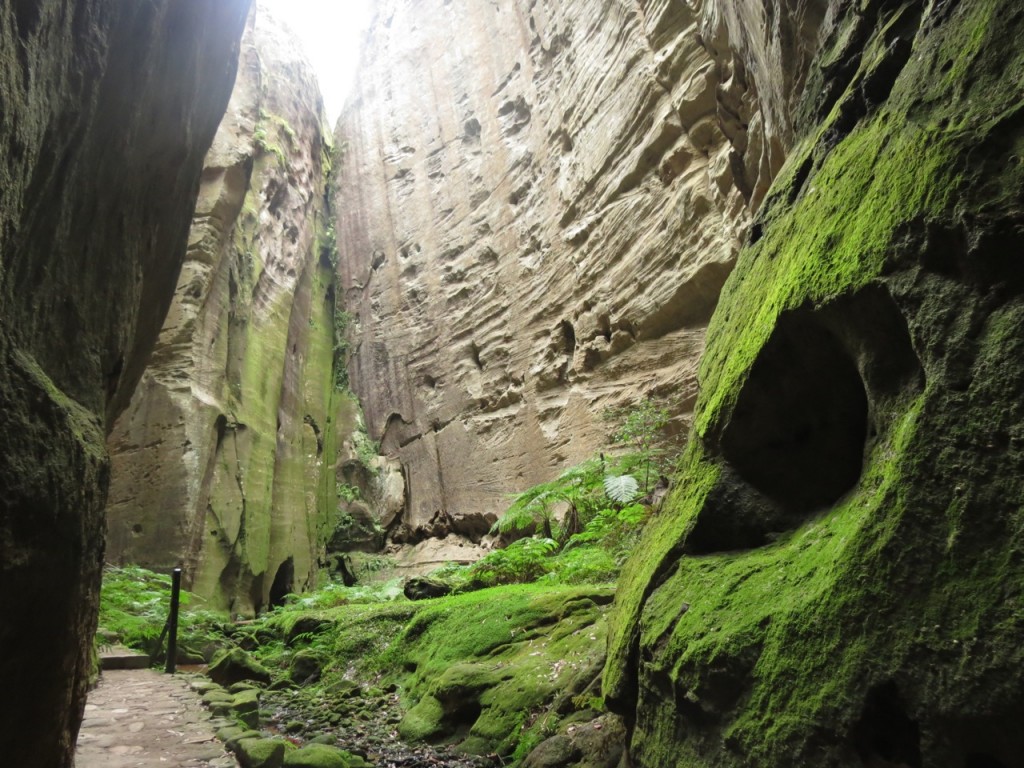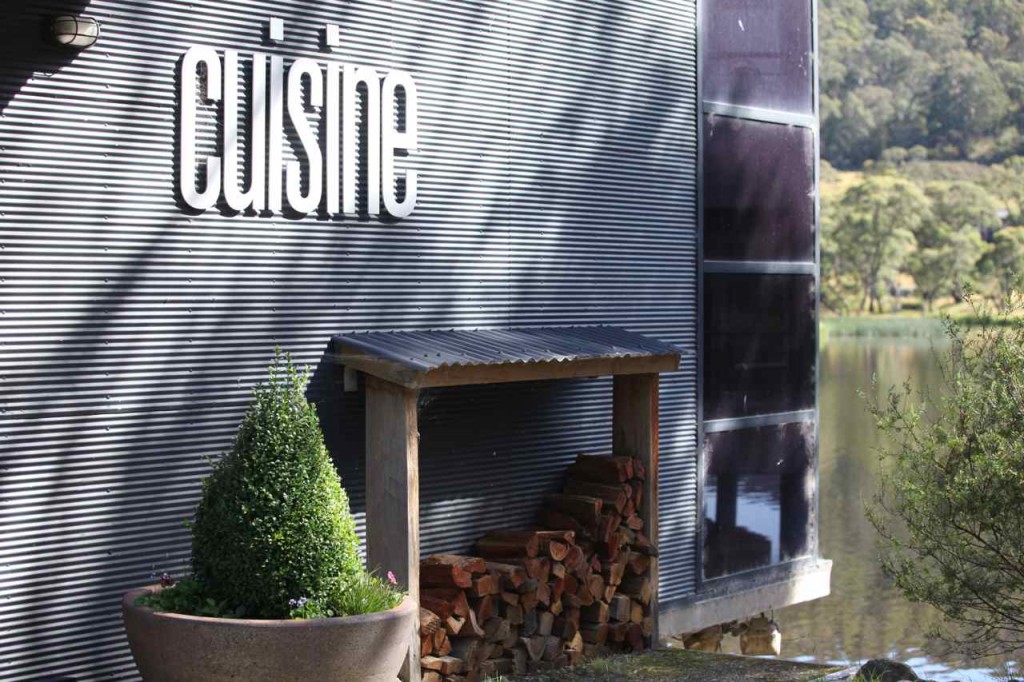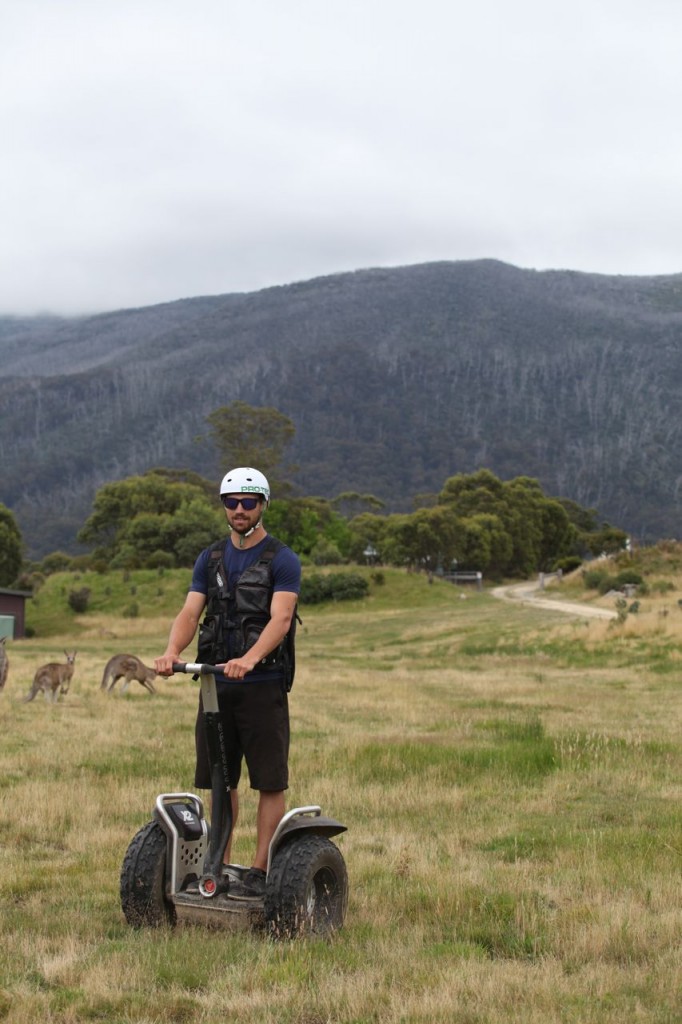The post Her Island Home – Janet De Neefe on the Spice(s) of Bali Life appeared first on .
]]>Janet De Neefe is pounding fresh spices in a mortar and pestle in her kitchen in Ubud, Bali. There’s candelnuts, and coriander seeds, black peppercorns, red shallots, garlic, chillies, lemongrass stalks, galangal, fresh turmeric, lime leaves and palm sugar.
The aromas have my tastebuds on fire.
The Melbourne ex-pat is about to make one of her favourite Indonesian dishes – a mouth-watering golden kare ayam (chicken curry) as well as an assortment of other spicy and fragrant side dishes.
On the other side of Janet’s kitchen bench, and looking somewhat out-of-place, is a large jar of Vegemite – a reminder of Australia and her home for the first 25 years of her life.
“Vegemite reminds me of home – of course – and I love it on toast for breakfast,” Janet says, “but it’s the exotic Indonesian cuisine that’s captured my heart.”
From the moment the Melbourne teenager stepped off a plane in Bali in 1975 she was fascinated with the food and culture of The Island of the Gods. “I was besotted with the mouth-watering cuisine. It was just so different to what we were used to in Australia,” she says.
Janet returned to Bali in 1984, and on only the second day of her holiday, she met her future husband, Ketut Suadarna. One chapter of her life closed and another opened and five years later the couple were married. Over the next 30 years, and with no formal culinary training, Janet (with the help of Ketut and her family) has built a food ’empire’ in Ubud of which many successful restauranteurs would be envious.
In 1987, and after learning as much as she could about Indonesian food from her sister-in-law, the couple opened their first restaurant – Lilies – in the famed Monkey Forest Road. In 1990 they established the Honeymoon Bakery and Guesthouse and in subsequent years Janet and Ketut opened two more restaurants – Casa Luna and Indus – as well as the Honeymoon Kitchen which operates from their guesthouse.
There’s also the popular Casa Luna Cooking School that attracts tourists from around the world keen to learn about Indonesian cuisine; the highly successful Ubud Food Festival which Janet started in 2015 and more recently, the exotic Spice Island Cruises.
Janet and Ketut also own a homewares store – Casa Luna Emporium – and in 2002 Janet started the Ubud Readers and Writers Festival as a way to draw tourists back to the island following the Bali bombings.
And if that’s not enough on their plate, the couple also have four children – Dewi 27, Krishna 25, Laksmi 22 and Arjuna 20.

FAMILY AFFAIR: Janet De Neefe, her husband Ketut Suadarna and children (from left) Krishna, Dewi, Laksmi and Arjuna at a recent ceremony in their Ubud home.
“I’m crazy about Indonesian food, which I feel is totally underrated,” Janet says. “I want to put a spotlight on this exotic spicy cuisine, which I describe as the ‘Italian food of the east’. It nourishes you from the inside out and is very medicinal. We don’t used canned or processed food and all our spice pastes are made from scratch with fresh ingredients sourced daily from the local markets. At the moment I’m crazy about jackfruit curry, I love smoked duck and my passion is baking sourdough bread with a host of different and unusual ingredients.”
Janet’s baking obsession has led her to invite sourdough ‘guru’ Chad Robertson from San Francisco to attend next year’s Food Festival, which will be held on April 26, 27 and 28.
Since its inception four years ago, the festival has grown into south/east Asia’s leading culinary event, showcasing Indonesia’s diverse cuisines, extraordinary local produce and shining a spotlight on culinary heroes – both new and established.
From the opening night party to the final mouthful, this year’s event held in April and presented by ABC was enjoyed by more than 12,000 hungry foodies – a 30 percent increase on last year’s attendance.
“The festival has seen enormous success and even though it’s mainly an Indonesian audience, it’s also attracting lots of westerners as well,” Janet says.
Janet’s latest food adventure, her famed Spice Island Cruises focuses on a small, but lucky group of foodies and adventurers who set sail on the high seas on an old-fashioned teak Indonesian pirate ship across stunningly clear tropical seas from Ambon to Banda Neira. Banda Neira lies in the middle of 10 small, sun-drenched volcanic islands scattered in the wind-swept Banda Seas, 200km from Ambon. “To arrive by water makes it nothing short of magical,” says Janet.
From snorkelling and diving in pristine waters full of some of the world’s most diverse marine life, to onboard cooking demonstrations led by Janet, to visiting the famous Run Islands which were home to the best nutmeg plantations in the world in the 16th Century, passengers are taken on an odyssey to a part of the world that still remains largely untouched. (The next cruise, by the way, is scheduled for November.)
So what’s next for Janet De Neefe?
Well, there’s cooking tours to the Komodo Islands and other eastern regions of Indonesia, and knowing this indomitable woman, probably a few other secret plans as well.
With such a hectic schedule, how does she find the energy to keep going?
“Daily yoga and the gym keep me physically fit, food nourishes my body and the spiritual side of Bali keeps me grounded and centred,” she says, before she shares one more secret: “Oh and a glass or two of wine is always a good idea.”
The post Her Island Home – Janet De Neefe on the Spice(s) of Bali Life appeared first on .
]]>The post A splash of love, a pinch of luck and it’s all molto bene for Ian Smith appeared first on .
]]>My first memory of anything related to cooking was measuring flour at South Wagga Primary School. I was photographed doing this for a local newspaper story on education. Sixty-three years have passed since then.
I’m not a chef, but I’m lured by the joys of cooking. These days, wherever I travel, I tend to seek out local cuisine cooking schools. I’ve taken classes in France, Vietnam, Thailand, India, Laos, Malaysia, and Italy. In truth, my interest and motivation to explore different cuisines was accelerated by my wife’s appreciation of cooking, as well as her present to me for my 60th birthday. She gave me a four-hour cooking lesson with French Provincial chef Bruno Puget, who at that time had a restaurant, La Table, in Mullumbimby.
But this story is about a chance opportunity that tops my list in travel cooking experiences. I’ve recently spent a wonderful couple of days cooking for the second time at the Saportita Toscana Cooking School alongside its master chef, Sandra Lotte.
The main ingredients of the story are:
- A house-swap with an Italian couple who had a home in Umbria.
- A restaurant in the town of Foligno in Umbria.
- Coles supermarket in Ocean Shores, New South Wales.
- A brand of tinned Italian tomatoes called Mutti Polpa.
Three years ago, during a house swap in the tiny walled village of Spello in Umbria, our Italian friends arranged for me to help out in the kitchen of a classy Italian restaurant, owned by a Michelin Star chef, Marco Gubiotti. I didn’t care what jobs they gave me.
It wasn’t easy because I didn’t speak Italian, but luckily there was a sous chef who did speak English. Marco, thankfully, was impressed with my knife skills. Gradually, over six weeks, I progressed to preparing various dishes, including the Porchetta, Scaloppini, tossing pasta, boning the salmon and, finally, the signature dish – an Umbrian-style Parmigiana, Melanzane (Parmesan Eggplant). This was full of flavour, requiring a rich Neapolitan tomato sauce to hold the other elements, Buffalo Mozzarella, Parmesan cheese, basil and, of course, the eggplant.
I fell in love with Italy. During our stay we took many day trips, as you do, to local wineries, walled cities, ancient ruins, cathedrals, concerts, and to wonderful eateries, bars and fine dining establishments. But the wonderful flavours – Sagrantino and Barbera wines, truffles and porcini mushrooms – became a distance memory on returning to our home in Ocean Shores.
To bring home the memories, I decided to cook the restaurant’s signature dish. And, behold, it was not as good. I knew it was the ingredients, not me. Then, one day walking down the aisles of our local Coles supermarket, I saw Mutti Polpa canned Italian tomatoes. The label promised the tomatoes were ‘90 minutes from vine to can’, so I decided to try them in the dish. My second effort using these tomatoes yielded the flavour. Everyone who tasted the dish loved it.
I was about to discard the can’s packaging when I read on the cardboard wrapper ‘Win a Trip to Italy’. I decided to take up their challenge to explain how I felt when I first tasted Mutti Polpa tomatoes. Being a wannabe guitarist in the (completely unknown) No Direction garage band, I set about expressing my feelings in song, writing, playing and singing a jingle which I recorded on 30-second video, backed by images. I entered along with 1,800 other aspirants, only to be told by my wife, Jane, ‘You’re wasting your time. The garden needs weeding’.
The phone call came from the marketing manager of Mutti Polpa who said those wondrous words: ‘Congratulations, Ian. You and you partner are off to Italy’. Wow! Two weeks in Italy, including one week live-in at the Saporita Toscana Cooking School, all-expenses paid, including airfares. I think Jane was more excited than I was, as she began turning the two weeks into a seven-week tour of Europe. However, once the news started to sink in I was truly humbled by the opportunity to go back to Italy. It was almost like I was going home.
After a little sojourn on the Amalfi coast, we arrived at La Casa Rossa Agriturismo where the Saporita Toscana Cooking School was located. Jane had absolutely no interest in cooking and was looking forward only to the other weeks on our itinerary. But, as we pulled up outside La Casa Rossa, we saw a sign that changed everything. The agriturismo was attached to an equestrian centre. ‘Well, I know what I’m doing,’ Jane exclaimed. When I explained that Jane had decided to ride horses instead of cooking, the chef and owner, Sandra Lotte, upgraded me to the advanced course.

Ian Smith (far left) with the CIA – that’s the Culinary Institute of America – interns and Sandra Lotte.
What a week! Truly amazing, fun-filled and action-packed. So many new cooking skills! Boning chicken, the sauces, the baking, the olive oil appreciation, truffle hunting, knife skills, wine appreciation, roasting, braising, and dish presentation… ahhh…and the deserts, demonstrated by a guest Italian chef, Mimmo Costanaza, known as the King of Deserts. I thought I could make pasta until Sandra showed me the traditional way to do it. I was part of a family of 16 students, cooking three meals every day, supported by five interns from the Culinary Institute of America (the other CIA). Such a memorable and rewarding life-changing experience! Had I known how good this was I would have paid for the weeks live in course myself.
Back home, cooking calorie-laden Italian food for my wife and friends, I decided last year to do my weight-conscious wife a favour and apply my skills to the Michael Mosely 5:2 eating philosophy. I created lower calorie versions of classic dishes which I call My5:2 Cook4Jane. It has a Facebook page, facebook.com/loweringcals/
This year we went back to Italy, following an invitation from a close friend to cater for her wedding in Wales. As it was our tenth wedding anniversary, I secretly planned to extend the trip to surprise Jane. I shared my plan with Sandra Lotte who immediately responded, ‘I want you in my kitchen cooking’.
The banquet for 60 people in Wales was a roaring success, according to guests at the reception. And back ‘home’ in Italy, I had the honour this time of teaching a new batch of students how to prepare Parmigiana Melanzane, the Umbrian way, in a Tuscan cooking school.
I ask myself whether my motivation, culinary creativity, experimentation, management and enjoyment of cooking are innate or learned. Is it by chance that I won the competition, or was it meant to be?
There’s one ingredient I didn’t mention, which I think adds to this story and may, in part, answer my own question. My great grandfather, Angelo Korf Tornahgi, was born in Milan. He was an instrument maker who came to Australia at the request of the Sydney Observatory to help build the telescope. Eventually he was commissioned to build the Martin Street tower clock in Sydney along with the clocks on Paddington Town Hall, Lismore Town Hall and many other clocks in New South Wales. He became the Lord Mayor of Hunters Hill and won the Kings medal for his contribution outside Italy.
Boun Apitito.
Here’s the link to my winning 30-second video for the Mutti Polpa Competition: https://youtu.be/IvCSKiP5rW0
When Ian isn’t gadding about the world, he resides in Ocean Shores, where he is equally passionate about his other pasttime – golf.
The post A splash of love, a pinch of luck and it’s all molto bene for Ian Smith appeared first on .
]]>The post The Past and the Present at the Lascaux Caves appeared first on .
]]>After a month in France in September, my very last ‘horse’ adventure was at the ancient Lascaux Caves in Montignac. I’d seen these magical caves on endless documentaries, and I’d always wanted to see them in person – and to continue learning about the relationship between horses and humans. The cave paintings – and you will have all seen the images I’m sure – are from 17-20,000 years ago, and feature a wide variety of animals that are recognisable today – including aurochs, bison, reindeer and horses – lots and lots of horses!
The caves (other than one original at Rouffignac which you visit in a train, passing ancient bear nests on the way) are exact copies of the originals and in the case of Lascaux 2, which was the one we chose to visit, only 100 metres from the real cave’s entrance. The caves had to be copied because unfortunately the amount of people going through them once they were discovered caused almost immediate damage to the paintings. The copy itself took seven years to complete, and the sites are incorporated into the World Heritage list.
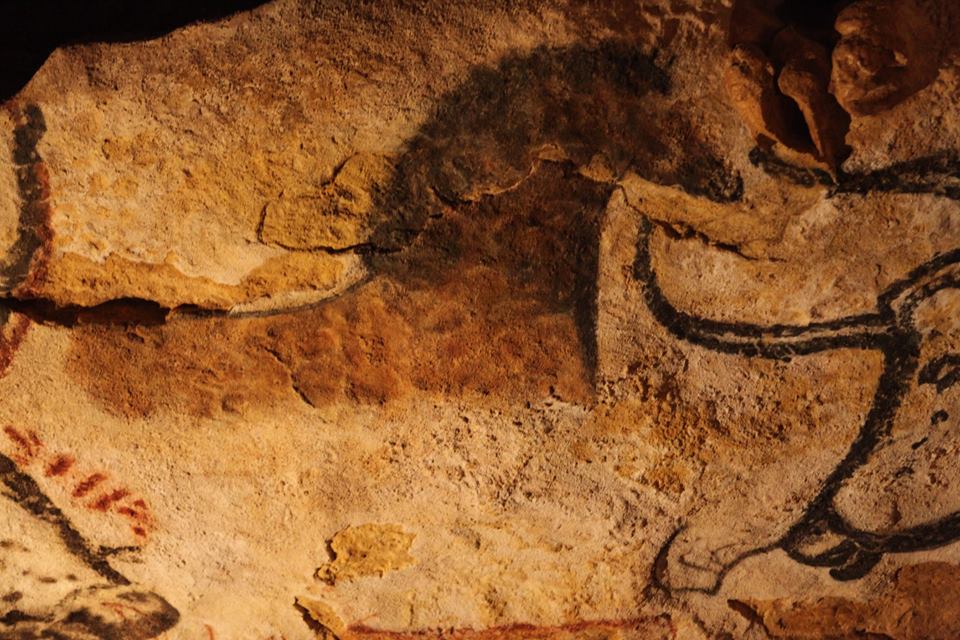
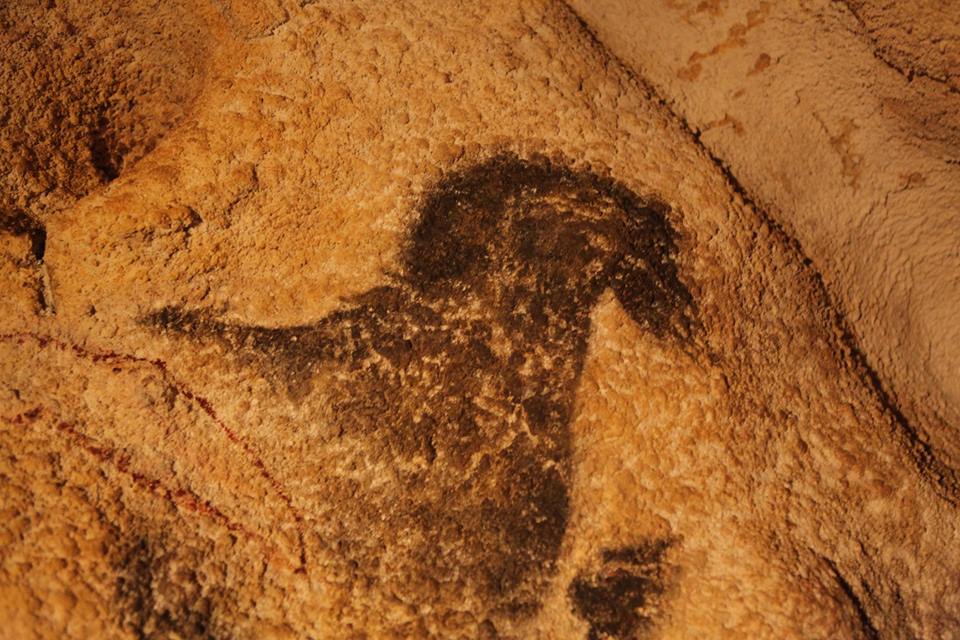

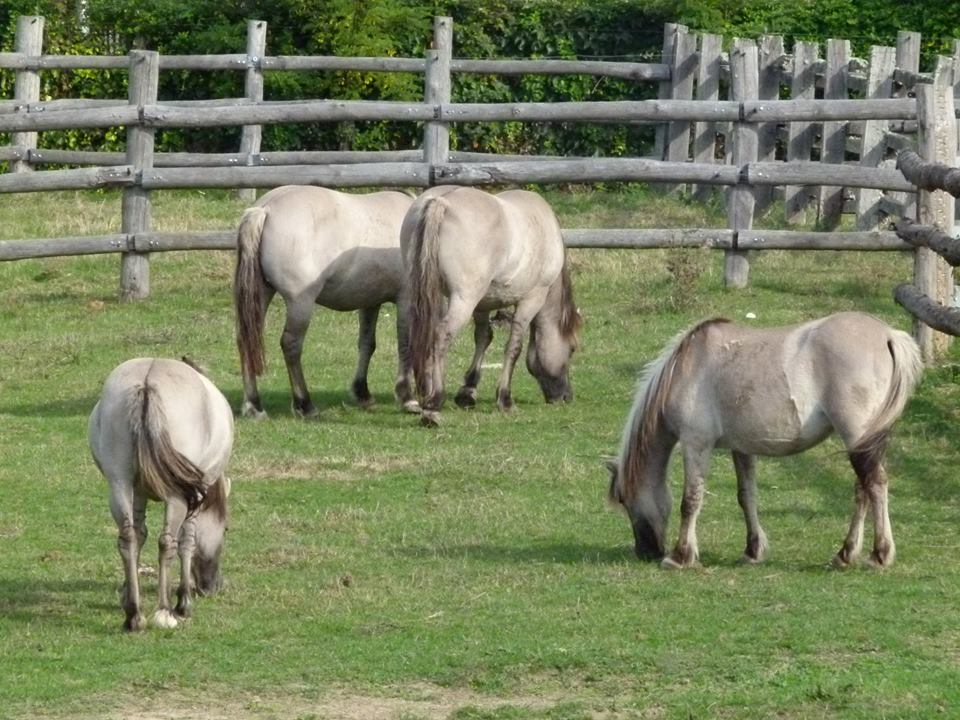 .
.I can’t even begin to describe the feeling of being surrounded by these wonderful images of horses – and the energy in the paintings. But THEN – even better, we visited a wild-life park nearby where they have a Przewalski’s horse – or Dzungarian horse, a rare and endangered subspecies of wild horse (Equus ferus) native to the steppes of central Asia.
It was extinct in the wild but thanks to a careful breeding program it has no been reintroduced to Mongolia. Most “wild” horses today, such as the American mustang or our own https://www.viagrabelgiquefr.com/ brumby, are actually feral horses descended from domesticated animals that escaped and adapted to life in the wild.
The Przewalski’s horse has never been domesticated and remains the only true wild horse in the world today. The horse is named after the Russo-Polish geographer and explorer Nikolay Przhevalsky (Polish name: Nikołaj Przewalski) and I’ll let you be the judge of how similar the little chap (who has donkeys for company at the moment) looks to the ancient cave paintings.
The grey ponies also tell a wonderful story because the Tarpan – also known as the Eurasian wild horse or simply, wild horse, is now extinct. The last mare believed to be of this subspecies died in captivity in Russia in 1909, but in the 1930s, several attempts were made to develop horses that looked like tarpans through selective breeding, called “breeding back”. Historians of the ancient wild horse assert that the word “tarpan” only describes the true wild horse but at the same time, the breeding program has been successful enough to produce these lovely grey ponies that bear a very distinct resemblance to their ancient ancestors.
So what I did glean from seeing the Camargue horses, the Cardre Noir dressage horses, and the ancient cave drawings? It yet again reinforced for me how the relationship between horse and humans is one of – when it’s good – a chosen relationship, on both parts. Finally, if you do happen to have an interest in horse history I can highly recommend Susanna Forrest’s The Age of the Horse which I reviewed for the Times Literary Supplement in the UK. It’s a fascinating account of the history of the horse from around the world. https://www.the-tls.co.uk/articles/public/horses-tale/
The post The Past and the Present at the Lascaux Caves appeared first on .
]]>The post The White Horses of the Camargue appeared first on .
]]>When I was a five-year-old, living in London, my father went on holiday to France, and visited the Camargue region.
Knowing already what his horse-mad daughter would want as a present he brought me back a book – Crin Blanc – (English translation: White Mane). It was black and white still shots from the 1953 short movie, which told the story of a young boy who tames a wild white stallion, Crin Blanc, so infuriating the locals that they hunt the pair, until the boy and the horse choose to disappear forever into the sea. The film won numerous awards including the short film Palme d’Or at the Cannes Film Festival.
Along with Black Beauty, My Friend Flicka, Tam the Untamed (any Australian readers remember that now very politically incorrect book?), Champion the Wonder Horse and a bit later The Silver Brumby, Crin Blanc became one of my all-time favourite books. It was in French, but the story was pretty self-evident, and from the time my father gave it to me, I was determined that one day I would go to the Camargue and ride a horse. (In fact as I child I was determined I would go and tame a wild stallion and bring it back to England, but dreams do become more realistic as we get older!)
So there I am – 57 years (yes you read that correctly) later, cantering along on Tato, or actually more like galloping along on Tato, a sturdy 14.3hh perfect representation of his breed, in the company of the manager of the ranch I’ve chosen to ride at. He’s on his part-bred Camargue/Lusitano five-year-old who still thinks every stick is a horse-eating monster, whereas Tato, fortunately has seen it all before. Despite that, though, he’s definitely forward, keen to go, soft-mouthed, and easy to ride.
There’s a minute, as we gallop along the edge of a small river, which has a herd of young horses, foals and mares on one side, and on the opposite side a large herd of the famous Camargue black bulls, where I actually have time to think – “This is the perfect moment.”
I have had, as the French say, ‘la chance’, because the threat of wet weather has kept everybody else away. Thanks to having spent a year working in French stables as a teenager, my ‘horse’ French is up to par enough so that at least Patrick, the manager of La Cabane du Daladel, and I can communicate on all aspects of horse care. Patrick is training his young horse, Crom, for bull-work, one of the main disciplines for the Camargue horses.
It’s a sad fact that there are actually no herds of true wild horses left anymore, but the reasoning behind the decision to allow registered breeders was to stop in-breeding or accidental diluting of the bloodlines.
In 2003, three registration categories were created to identify Camargue horses: one the pure Camarge – horses registered in the stud book, foaled and identified in the Camarge, branded before weaning and from a ‘manade’, a small semi-feral herd of which only 45 exist; the Carmarge hors manade – horses registerd in the stud book, foaled and identified in the Camargue from the select list of private breeders and the Camargue hors bercau – horses registered in the stud book, foaled and identified outside of the Camarge to registered breeders.
Thanks to these measures, the ancient blood-lines of the Camargue horses, considered to be one of the oldest breeds in the world, will be safe forever. For thousands of years these horses have lived in the delta of the River Rhône, a wetland marshy area which these days is a massive national park.
Patrick tells me that the Camargue horses in the main live a: “good life”. Those brought in for regular trail-riding work – which of course if the fate for many of them – are lucky. “They work from April to October,” he says, “and then they go back out into the marshes.”
And when he says marshes, he means marshes. When we are not trotting or cantering along the sandy paths between the lakes and wetlands, we are picking our way through water which varies from a few inches deep to well up to Tato’s stomach, so that we are almost swimming and my feet are somewhere around Tato’s head trying to keep my boots dry!
What is extraordinary to me is that not only do these horses cope with this environment, they positively thrive on it. Thanks to the fact that the water of the Rhône is sweet rather than salty, the somewhat unappetising looking stringy grasses are apparently full of nourishment, and the marshes too are full of herbs and different sorts of grasses. Patrick tells me working horses are fed once or twice a day, but normally just with hay, and are usually let out at night to graze. I have to say I did not see one skinny horse during our four-day visit there.
I don’t know about other ‘ranches’ but at La Cabane du Duladel when a horse reaches retirement age from its work, it’s put out to pasture with the foals and mares, until, as Patrick elegantly puts it, “one day we find him asleep forever”.
So one thing (as a vegetarian) that concerned me of course, is the ‘bull’ work, but in the Camargue, it is literally that, rather than bull-fights. The ‘guardians’ – horse-riders – use their horses to round-up the bulls, but also in fetes and street events throughout the year where the bulls are galloped with through the town, while young men jostle for the privilege of hanging onto a bull’s horns! It sounds highly dangerous, but in fact the street work with the bulls and horses is much safer than the ‘tauromarchie’, or bull-fighting in the arenas where the young men have to remove a string tied around the bull’s horns, and where a fresh bull is brought in every 15 minutes.
The best bulls live to be up to 40 years old, and some are so famous they even have their own statues.
At one point, as we stop and gaze at a herd of cows with their calves, their horns just beginning to take on the beautiful lyre-shaped points they grow as adults, Patrick looks pensive. “I think,” he says, “in the Camargue we love our bulls even more than our horses.”
Watching him sit Crom as he dances his way around the marshes, and how he gently reassures him, I think – or hope – he’s probably teasing me.
The family herds in the Camargue are so important that when we ride into the middle of the massive marshy area where the mares and foals are eating, all Patrick has to do is click his tongue and call and they all make their way towards us, gently saying ‘hello’ to our horses and generally showing the calm temperament that their breed is known for right from the start.
Some researchers believe that the Camargue horses go back as far as the small Paleolithic Solutré horse which was hunted for meat. The horses were appreciated as riding mounts by the Celtic and Roman invaders, and blood lines of the Iberian horse have been found in their DNA. In fact, the original Spanish ‘Jaca’ horse was probably a cross between the Celtic pony and the Camargue. It was later improved by crosses with other horses brought in by the Moors, and because of its cross to the Jaca its DNA found its way into the Americas where breeds such as the Chilean and the Criollo show some of the characteristics common to the Camargue horses.
So what are the characteristics? My little Tato was a brilliant example of a pure Camargue horse – their average heights being from 13.3hh to 15.2hh maximum. He was broad and stocky with a short neck, deep chest, obviously strong legs, and a beautifully full wavy mane and tail that I had plenty of time to gaze at. His ears were small and forward – and as Patrick said, “he loves his work”. His trot was even and flat, and his canter too. With the modern version of a working Camargue saddle on he was so comfortable I could ride all day, and his back end was as well-muscled and round as any Quarter Horse.
Over thousands of years, their hooves have adjusted to the marshy ground, becoming hard and tough with very flat wide soles. Put one of our thoroughbreds in there and I swear they’d have an abscess and thrush in a week or two!
The two hours seemed honestly to pass in ten minutes – we passed swans, and water-birds of all kinds, an otter in the river, and began to make our way peacefully home.
There’s only one problem with ticking something off your bucket list, I thought as I reluctantly dismounted – it means it’s unlikely to happen again – but it’s an experience I’ll certainly never forget. I hope little Tato enjoyed it too, and that he too, when he reaches retirement age will live out his days in his marshy wetland home.
We’d chosen to say in at the Mas du Notaire winery in Gallician, in the heart of the Camargue. The beautiful old farmhouse has several forms of ‘gites’ – accommodation – attached, including access to a kitchen and refectory. We were there on the exact weekend that they were reliving the glory days of summer, and bulls and horses seemed to be everywhere in the town – in fact everywhere we went in the Camargue the white horses seemed determined to find me – we saw them out in the marshes, making their way across roads and rivers, and in every town we drove through.
The towns too, are famous for their beauty – Arles, of course, where Van Gogh lived for a year, and was at his most productive, and a special mention for the amazing cathedral in Saintes Maries de la Mer, dedicated to Saint Sarah, the patron saint of the gypsies. Another non-horsey high-point was definitely the ornithological park only a few kilometres out of Saintes Maries de la Mer, with its flocks of pink flamingos.
The Camargue is truly a magical place – if it isn’t on your travel bucket list, I suggest you add it, you won’t regret it!
A version of this story first appeared in the HubVibes ezine: https://equestrianhub.com.au/publishing/
For trail riding contact: La Cabane du DALADEL
Patrick Fargier
D 58 – 30600 MONTCALM (between Aigues-Mortes and les Saintes Maries de la Mer)
Tel / Fax 04 66 73 52 08 – 06 20 78 03 74
www.chevaux-listel.camargue.fr
For Mas du Notaire go to: https://shop.famillerambier.com/en/lodging/guest-houses-of-the-mas-du-notaire-in-camargue/
For the Ornithological Park go to: https://www.parcornithologique.com/https://www.parcornithologique.com/
The post The White Horses of the Camargue appeared first on .
]]>The post Tranquility plus on Tamborine Mountain appeared first on .
]]>It seemed like a good idea at the time. Get away for a winter weekend’s camping, somewhere deep in a national park. No phones or computers, just bush-walking and meals cooked over an open fire. But we hadn’t counted on the rain in the Northern Rivers continuing for weeks – months, even. The last desperate call to a bed and breakfast in the Border Ranges giving us the unwelcome information that the area had received over 200mls of rain in five days. Which was mind boggling to imagine. “It’s a bit wet underfoot,” said Betty, my information source, in a classic understatement.
So what to do? Itchy feet, a free weekend, all dressed up and nowhere to go. Surely I thought, somewhere not too far away there had to be a place we could take time out where we could stay dry? Was that too much to ask?
Then a thought popped into my head. I’d recently driven over the beautiful Tamborine Mountain, and I’m ashamed to say that after 14 years of living near Byron, I’d actually never visited Tamborine, but I do have a friend who lives there. Fiona, I thought, just might know somewhere we could stay, and instead of our wilderness weekend we could swap it for a weekend of mountain village life.
Which is how we found ourselves on a Saturday morning arriving outside the Villa Margaret a gorgeous red-brick home, rumoured to have been designed by Burley Griffin, three-storeys high and surrounded by autumnal vegetation. It was almost magical stepping through the wrought-iron gate with its tinkling bell into this gracious home, which has been lovingly restored by its owners.
The owners have stayed true to the house’s original date of the 1940’s, decorating in an understated art-deco theme which runs throughout the house. We had the house to ourselves for the weekend and for us, the downstairs floor with its bedroom, bathroom, the kitchen and the living room with its open fire-place was plenty of room, but this house is a perfect mountain place for families. Each storey has a bedroom, bathroom and sitting or small kitchen area – the top storey boasts the most incredible views all the way to the Gold Coast, and has its own Juliet balcony; the middle hosts the library and a telescope, a private writing space, bedroom and bathroom, and the downstairs the general living, including a long dining table, and a generous kitchen equipped with espresso machine, and everything you need to cook up a gourmet storm after visiting all the local produce purveyors.
Fiona Porteus, the miraculous provider of the accommodation lives right next door in the Old Blacksmith’s cottage where she makes her range of Old Blacksmith’s jams and preserves, (www.facebook.com/theoldblacksmithscottage/) so it seemed only right to start our mountain adventures with a cup of tea in her beautiful little cottage with its cosy slow-combustion stove, and port-soaked figs simmering on her stove.
The Old Blacksmith’s Cottage – a beautiful renovation of a local landmark.
And so began one of the most relaxing weekends I’ve had in a long time, although it has to be said that we hadn’t exactly escaped the rain, but sitting in the Mt Tamborine winery with soup, warm damper and a fire was just a tad more pleasant than being in a rooftop tent.
We decided that our accommodation was so beautiful there was no point in going back out for dinner so we hunted and gathered at the local supermarket, and headed back to light the fire and settle in.
Googling Vila Margaret didn’t confirm whether Burley Griffin had designed the house, but it did throw up some interesting facts. During World War II the house was the weekend getaway for General Douglas MacArthur, and also for the longest serving Catholic Bishop, the revered Archbishop of Brisbane, Sir James Duhig. Decades later the house became a contemplative retreat for the Sisters of the Canossian.
The history suited the house – its solid exterior with its bay windows and balcony, its generous rooms, and quiet places to sit and read or contemplate, made it easy to let the everyday worries of the world drift away. With its three almost self-contained storeys, it’s a perfect place to stay with two or even three families, and it’s listed on both Airbnb and Stayz.
On Sunday morning we woke to a brave new world – one in which the sun shone so brightly it was almost a shock to the system after our weeks and weeks of rain.
Everything sparkled – the misty Payne’s Grey mountain of yesterday was emerald and blue, with startling splashes of colour from darting parrots and winter blooms. It was a perfect day to explore, and so we did – starting with a modest short walk to the nearby Curtis Falls and the local shops. I’d read about the Skywalk – a metal walkway 40 metres above the ground through the rainforest, and although it did suggest that if it was windy and you were scared of heights, to steer clear of it, on a windless day it was a perfect way to see the canopy. So with one of us (me) praying that the lack of wind would continue we set off on the 1.5km Skywalk, which was everything we’d hoped. From our vantage point in the trees we could see orchids and stag ferns, butterflies and birds, and the hanging trail of vines reaching down, while the trees seemed to be stretching for the light. A creek meandered through the forest floor, and the light was a photographer’s dream. If you only have limited time on Tamborine, I would highly recommend the Skywalk.
Two walks – time for lunch, and where else on Sunday but the Cheese Factory, the uber-cool eatery complete with restaurant, separate bistro, a cheese and wine shop and the cheese-making factory. By 12.30 it was already packed, but we found a table – after a serious amount of cheese-tasting and were joined by Fiona – who introduced us to Meredith Morris, the owner of the Cheese Factory, and Michael Reeves, the cheese-maker. Michael, originally from the UK, emigrated to Oz with a swag of accolades including being awarded the Most Consistent Cheesemaker in the West Country and, most impressively, Best Traditional Cheddar in the world.
“I worked my way up from the packing room floor,” he tells me while we try some of his hand-made specialities accompanied by the bistro’s palette of beers. “But even though my cheddars were really famous in the UK, I’d actually never made soft cheeses before I got to Australia, so it was a steep learning curve.”
The curve worked in nicely with the increasing popularity of the Cheese Factory as a weekend dining spot, and for Meredith it’s a chance to have a place that showcases not just local produce but high-quality cheese from around the world.
“We want customers to come here and have great food and beverages, whether it’s pizza and beer or a gourmet meal, or a tasting plate of cheese and a beer palette,” she says.
We felt it was our Sunday lunch duty to try as much of as many things possible, and thanked our lucky stars that the house was only a (slightly wobbly) short drive down the street, were being horizontal for at least an hour seemed like a seriously good idea, particularly since Fiona, who seems to have boundless energy, had decided that I should do the Palm Grove National Park walk since it was right below the house.
So armed with gumboots, long socks and salt (for the leeches) we headed off into the rainforest once more, this time with nobody to disturb the peace, and fortunately no leeches either. The walk – a leisurely 40-minute stroll took us over creeks, and through massive groves of trees, while around us the birdsong was a natural symphony. Fiona’s daughter, Alexis, who is the Environment Officer at the local school, pointed out different plants and vines, and at one point we plunged a little way off the path to find a hidden old logger’s hut, abandoned over a century ago, but still intact. It was moving to stand in the filtered late afternoon light, and wonder at the lives that had been lived there, absorbed now into the rainforest with no trace of their daily comings and goings.
The walk brought us back up at the bottom of Palm Grove Avenue and we walked back along the road towards the house and Fiona’s cottage where it was time to make a choice from her wonderful range of goodies to take home and loaded up with jams and the port-soaked figs, we headed back for our last night.
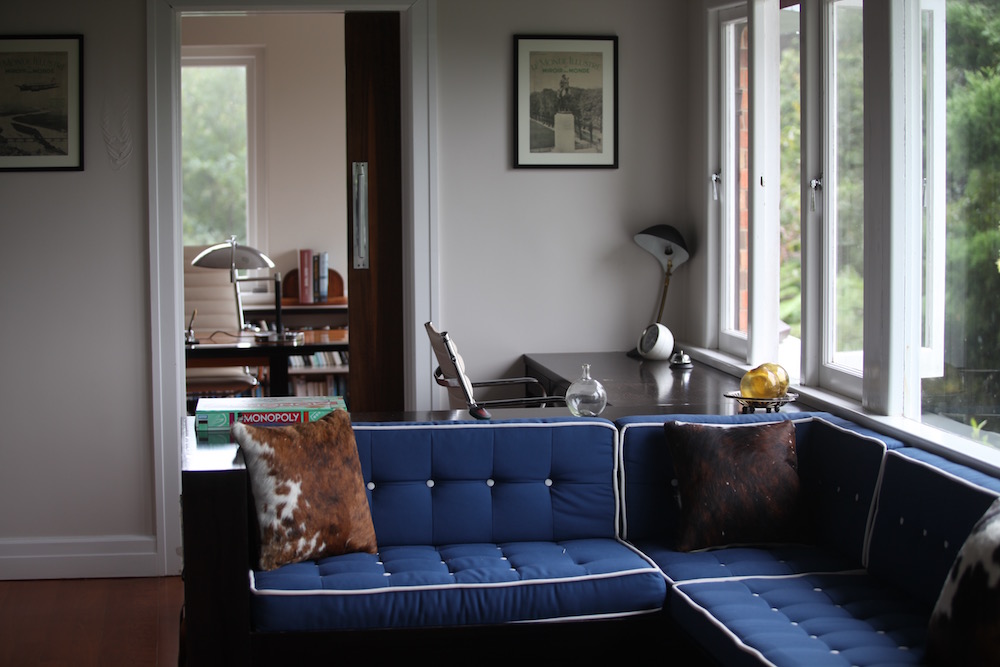
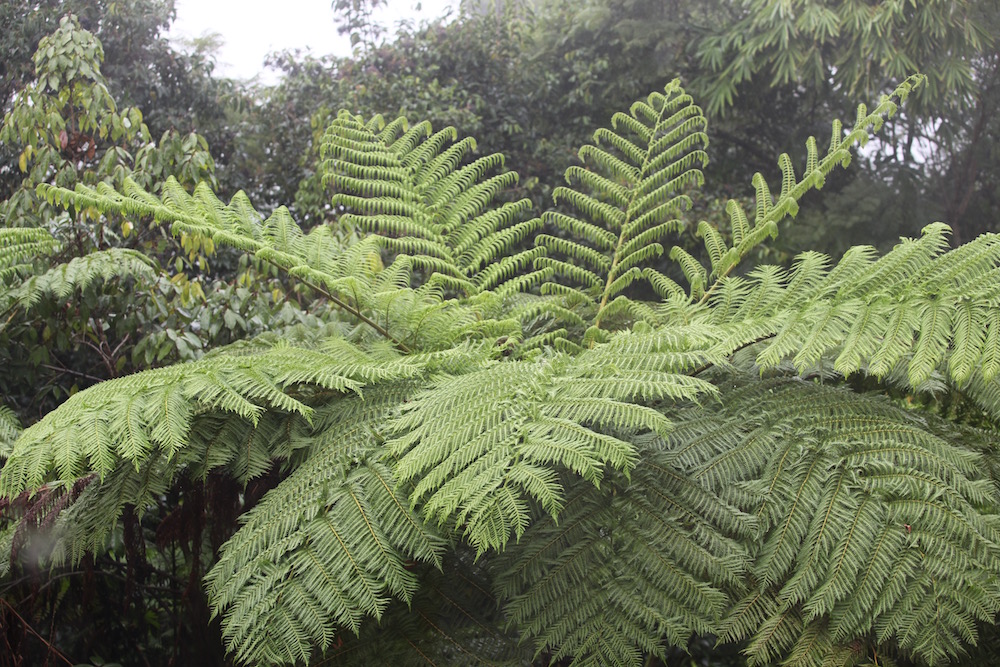

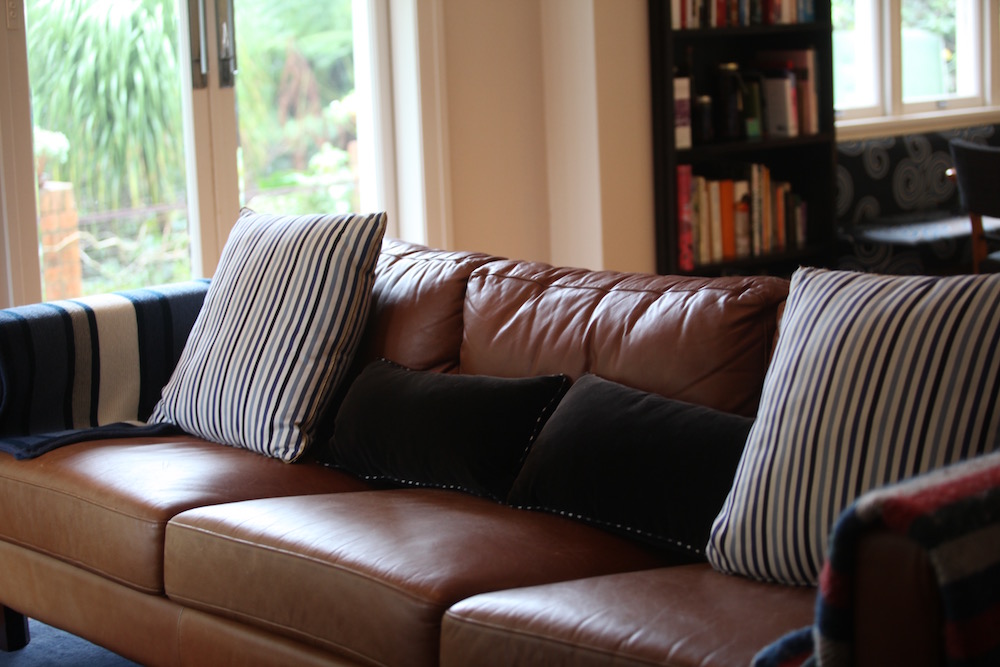
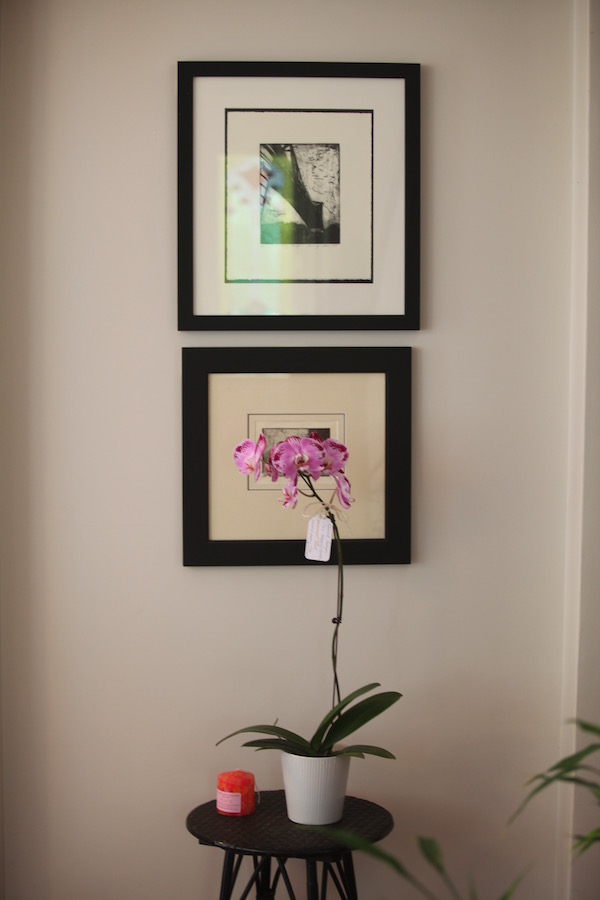


Images from Villa Margaret
To contact Fiona Porteous at The Old Blacksmith’s Cottage go to: www.facebook.com/theoldblacksmithscottage/
For more information on Villa Margaret go to: villamargaret.com.au/
The post Tranquility plus on Tamborine Mountain appeared first on .
]]>The post Airport hotel shapes up for a flying visit appeared first on .
]]>If you live in the Northern Rivers chances are you’re going to fly into or out of Brisbane at some point. On behalf of our readers, Verandah Magazine’s Georgina Bible explores the Novotel Hotel – and finds it a perfect spot for preparation or recuperation…
Due to flight scheduling for a recent overseas trip, I needed to stay near the airport in Brisbane for two nights, one pre-flight and one post flight and decided to book a room at the Novotel Brisbane Airport for its location – it’s the only hotel located in the Brisbane Airport precinct. But I admit it was with certainly reservations – with sterile lobbies, generic furniture and underwhelming room service food still lingering in the memory, the last place I wanted to start or end a holiday was in another high turnover hotel room near an airport. I needn’t have worried.
The appeal of the Novotel begins in the lobby with its vast, light-filled space completed by a huge atrium style roof that extends six floors. Check-in is friendly and efficient and there is a screen above the reception desk showing live flight information. Opening onto the lobby is the Catalina Restaurant – a large space with an open kitchen – and a 24-hour business centre.
The Novotel features standard rooms, premier rooms and executive suites. I booked a standard king room – the décor is stylish with its warm blend of earth tones accentuated with bright coloured pillows and black and white photography. The bed is enormous and there’s a pillow menu for those who prefer a choice. The room features a large flat screen TV with cable channels, a couch, coffee table and desk, as well as complimentary tea and coffee. The bathroom feels sleek with its over-sized white tiles, marble topped vanity and timber finishes. I slept well on both stays – the double glazing on the windows keeping out noise from the airport and nearby road.
The only downside was the cost of the Wi-Fi, $12.50 for 2 hours or $24.95 per 24 hours. The room also lacks a bathtub, but the rooftop relaxation terrace was the perfect antidote for a tired body. The heated swimming pool is stunning, featuring deep glass windows and views across Brisbane. A gym and sauna is also located on the roof – the gym is open 24 hours, perfect for weary travellers arriving at all hours of the day and night.
For my pre-flight stay, I chose to eat at the Catalina Restaurant, which features modern Australian cuisine and a stylish bar with separate lounge area. The Atlantic salmon, pickled potato salad, wilted Asian greens ($33), did not disappoint. I followed it with the French apple tart, lavender ice cream, honeycomb, vanilla crème anglaise ($15), perfect for those with a super-sweet tooth.
My flight back to Brisbane arrived late but I was able to catch the hotel shuttle, available at limited times morning and evening with a $5 charge (cash only). Check-in was once again seamless but with jetlag creeping in, I decided to choose something from the room service menu for both dinner and breakfast the following morning. The entrée sized pan fried potato gnocchi with asparagus, walnuts, mushrooms and cherry tomatoes ($19) was just the right amount before going to bed. I woke up in a stupor of jetlag but knowing that breakfast was being delivered to my room was as much of a relief as the actual breakfast. I settled on field mushrooms with sourdough bread ($11.50) with freshly squeezed orange juice ($7.50), which turned out to be a bit of a jetlag cure.
The Novotel hits all the right notes – comfortable, clean rooms, decent food and enough distractions to while away the hours before a big flight, making it an ideal place for anyone needing to stay near Brisbane Airport.
Georgina Bible stayed at the hotel at her own expense.
The Novotel Brisbane Airport is located at 6-8 The Circuit, Brisbane Airport, Queensland. The hotel is 2.6km from Brisbane International and 4.8km from Brisbane Domestic. For more details, phone (07) 31753100 or visit novotelbrisbaneairport.com.au Standard Twin/King Room start from $259 per night but are subject to seasonal variation – check with the hotel.
Highlights: Don’t miss the stunning roof top swimming pool or the nearby Direct Factory Outlet, featuring more than 120 brands from Australia and around the world.
The post Airport hotel shapes up for a flying visit appeared first on .
]]>The post A bucolic 1000 kilometre walk and life was all mouy bien appeared first on .
]]>It was early summer and the cobblestones were cool in Florence and Bologna, great for a few cheeky reds and gnocchi in never-to-be-found-again backstreets. Elba turned on a citrus sun with cypress pines serrated along the ridgelines; half-fastened zips in the blue lining of the sky. The beach was all honey-baked-ham tans and a great advertisement for the homogeneity of Italian life where I got the impression that everybody was simply thinking about what’s for dinner. And, delightfully, it was the same in northern Spain where I headed next to start a mere 1000km stroll from Irun to Santiago on the Camino del Norte.
Irun is in France and the border between it and Spain runs down the middle of a less-than-lovely little river spanned by a bridge in no way resembling anything out of Madison County. Mid-bridge you step over the border, but there is no dotted line that lends itself to photos. Mike Hardy, my traveling companion, and I walked along with the Atlantic on our right and a mountain range on our left which was a nice way to pass a couple of hours before we came to our first town – San Sebastian, which apparently has more Michelin stars than any other place on the planet. It should get some sort of National Geographic star for its location on the Bay of Biscay, which was full of people full of tapas taking the sun in a very civilised way. Mike and I gave the tapas a good workout and did the locals a favour by taking on the local glut of sangiovese while we sat and watched an Irish wedding on the steps of an old, old church; afterwards we strolled the laneways which Hemingway used to habituate when he wasn’t blasting endangered wildlife in Africa. (On the wedding, I just have to say that there is nothing that semaphores self-consciousness more than a linen suit on foreigner abroad.)
From then on it was a charming blur of little farms rampant with figs, kiwifruit, peaches and tomatoes; the Atlantic on its best, bluest behaviour; and little bars for lunch. And this was all in the occasional company of a United Nations of fellow walkers. A lovely twenty-something speech therapist from Heidelberg – who said she felt safer walking with Mike and I – kept us amused with her translations. We were talking about someone in disguise and she asked “What were they doing in de skies?”. Mike said something would make a lovely photo. Hanna thought he was talking about a “lively Friday”. I remarked to her “Nice little town” which she heard as “Do you want to settle down?”.
A few hills, villages and cafe con leches later, Bilbao appeared. I don´t think there could be any comeback if you recommended this place to even the hardest marker. Old squares and people endlessly eating and drinking red wine at what would be scandalous hours in some Lutheran setting is beyond picturesque. The Guggenheim art museum by Frank Gehry makes the Sydney Opera House look like a snap-together kit, albeit a beautiful one. The only thing that detracted from it was the giant brass spider at the front. It looked like the work of a cryptobiologist with a welder and too much time on his hands. The boulevards were wide, the lifestyle obviously expansive, and the people seemingly friendly, if not forthcoming.
Another 42km go under the boots and we stroll into the seaside town of Santander, which had a certain elegant savoir faire. The first beer preached to the converted and talk among the walkers turned to blisters….they have them in places they didn´t previously have places. I considered myself lucky because I had no peripheral neuropathy or soft tissue trauma to report but to maintain solidarity, I made something up. We hit the first restaurant we saw and Mike and I both order what we think will be a huge plate of pasta which sadly for us translated to Muscles Marinara. What we got was marinated muscles. The only thing for it was to have the waiter ferry back and forward baskets of yesterday´s baguettes to sop up the sauce. As food faux pas go, it didn’t rate against going with the set menu in a little town further back and getting a big plate of cuttlefish cooked in their own ink. Actually it tasted great but I don´t think a plumber could have happily sat down to it.
After a few days I got down pat the phrases to get coffee, wine, beer and food, and then tell them it was all muoy bien; although in the Basque region that was about as much use as a butt piercing because they speak Euskotren.
One night Mike and I found ourselves in a little bar having dinner and watching with about 50 locals the finals of the ‘Rip the head off a dead goose’ contest. It went like this. A boatload of people row up to a dead goose tethered to a very strong rope which has a powerful winch at each end. Someone jumps from the boat and grabs the goose. They have a few quiet moments with the goose before the winches rip them both out of the water to a height of about 7m. The object is to rip the goose´s head off before the tensioning of the rope rips something of your own off.
Our merry band continued to grow and we seemed to have a reputation as fun-lovers. Larry the Canadian even took a train backwards so he could spend the day with us in Santander. Patrick the French social worker from Bordeaux left us before the end of the trip. We said goodbye to him in the shade of a massive stone arch, the forecourt of a bar, after we bought him a few too many vino tintos. He wanted to tell us about his childhood in Saigon and his Bordeaux caseload. We did listen empathically, right up until he got out his pack of Lucky Strikes – there’s no stigma to lighting up in Europe. They must shove a cigar rather than a dummy in babies’ mouths over here.
Speaking of smoke, on another olfactory matter, when they store the herbage they harvest from their meadows over here it smells for all the world like Christmas pudding, or a really good fruitcake. I remarked on this one day to a young German bloke I was walking beside and he said: “To me it just smells like shit, but then again I only ever usually breathe airconditioned air.” There you go. One man’s Christmas pudding is another man’s ….
As we crossed from Basque country to Cantabria there was no more cuttlefish cooked in its own ink on the menu, so I ordered the grilled turbot instead, expecting at 10 euros some discreet, possibly rectilinear, fillet to come out. But I got the whole fish. It was a big plate, and both head and tail hung over the edges. (Food often comes in Spain with its head still on by the way.)
You tend to get a week’s worth of life in one day here. It´s probably why punters have the odd garden-variety epiphany. They walk for a week and it´s the equivalent of seven weeks in their own company. No personal miracles for us yet, but 30km into a 40km walk I did have a vision of a nice glass of dry white and a plate of the calamares fritos I had back in Bilbao.
One morning we were about to leave a perfectly preserved Spanish village – all sun-sucked pink pipe clay rooves and stone-stacked walls – when we came across a cat with its head stuck in a tin of petit pois. Thinking the lid might still be inside and could take all nine lives if we gave the tin a tug, we opted to call a vet. Lucky we had a Spanish speaker in our number for that task. We waited but the vet didn’t arrive so a few of us decided to perform the delicate operation before Moggy suffocated. No lid, thankfully. First one ear popped out, and then the other…and then out came the head and the most dilated pupils I´ve ever seen. It bounded off without giving anyone rabies, and we began our walk for the day feeling virtuous.
In Gijon we started our progressive dinner in a local bar on the seafront. Cider was the drink there – and you aerate it before you drink it by pouring it from arm’s length. After we’d finished, the pub was considering closing the cobbled street because of the risk of some old dear slipping and then sliding into the sea, disappearing beneath the waves with a last exhalation that life had been mouy bien.
The post A bucolic 1000 kilometre walk and life was all mouy bien appeared first on .
]]>The post The Cullen Hotel – where art and accommodation meet appeared first on .
]]>Looking for a place for an overnight stay in Melbourne, Candida Baker chanced across The Cullen hotel, part of the Art Series group, and was intrigued not just by the concept but by the fact that they wanted to review her!
What a wonderful idea the Art Series hotels are – one of those ideas that from the minute the first one, The Cullen, opened in 2009, it seemed as if they had always existed – or should have always existed.
I’d heard of them, but I’d never stayed in one, so I considered myself lucky to have the opportunity to stay at the Adam Cullen cullen hotel in Commerical Road, Prahran, a few weeks ago when I was down in Melbourne for, appropriately enough, a book launch of an art book I’d edited – the Pat Corrigan Collection of Sally Gabori Paintings.
From the first moment I entered the hotel with its full-size cow in the foyer, I was enthralled. The mainly black and fawn interior was a perfect foil to Cullen’s cheerful, colourful, chaotic and occasionally, it has to be said, grotesque art. Cullen, who won the Archibald Prize in 2000, is well known for his caricature-like style and bold use of paint. Inside the hotel the walls were festooned with prints of his works – and I loved it.
Thinking about it afterwards I think what appealed most was that it was like sleeping in an art gallery, or more correctly in an exhibition by one artist, and it allowed me time to reflect on the pieces, as I went about my business, to notice each time I walked in or out of the hotel, or took the lift to my room, different things about each individual piece – and there are 450 pieces throughout the hotel. I found the idea inspirational to be honest.
The hotel has also instituted a somewhat radical promotion – a reverse review where the hotel reviews the guest. I’m not sure where this idea came from, but asked to participate I willingly agreed, without, it has to be said, fully thinking it through. I mean, where to do you start or stop?? Do you take the sheets off the bed, for instance for the housemaids? No, I decided. Do you try and make sure that the sofa cushions are at exactly the same angles they were at when you arrived? Yes. Do you take much more care about your rubbish, hanging up towels, washing out mugs and generally being as tidy as you can be? Yes. It was kind of fun – a bit of a game, really, although I have to confess I was a bit disappointed with my three star rating, even if they did call me ‘sophisticated’, which never goes amiss when you’re swapping your gumboots for your city heels.
‘Like budding authors to a Parisian coffeeshop, or perhaps impoverished musicians to electric New York dive bars, we like to think that The Cullen attracts a particularly in-the-know clientele. So when Candida arrives, wearing glasses, all in black, air of sophistication, and writing a magazine article, we like to think we’re doing something right,’ read my review. (And if I was going to be snippy and edit my review I would point out that they’ve used ‘we like to think’ in two consecutive sentences. Just saying.) A few other guests were shameless in their (successful) attempts to get five stars, including stripping the bed, dusting the room and sweeping the floor, which I have to say makes me wonder about the point of being away from home, but perhaps that’s just sour grapes because without a five star review I don’t go in the draw to win a free night!
The Cullen has a funky bar and café attached to it, and is attached to one of Melbourne’s most famous dumpling bars, the Hu Tong Dumpling Bar, where we went for dinner after the book launch, and I can highly recommend it as a place to eat. The Cullen is also directly opposite the Prahran markets, which is a huge drawcard – I met with friends for a coffee and I could have spent hours wandering around the food stalls.
To be more conventional and review their rooms I would say that the furnishing theme is fairly minimalist, and, whilst they are pleasant, they’re not really out of the norm in any way. It’s the art that makes them, and obviously that’s the point. It’s a concept that’s worked, with more boutique art series hotels opening all the time – including in Melbourne The Olsen and The Blackman, and in Adelaide The Watson. Personally I wasn’t entirely sure about the tiny kitchen stove-top when you’re staying in one of the great eating areas of Melbourne, but I guess it’s a viable alternative to eating out, and the hotel doesn’t do room service, although the restaurant below will deliver for a price. They also have a gymnasium, which I didn’t have time to try out, and if you hire the Penthouse suite you get a zippy little car to nip about Melbourne in.
I also discovered the Star bus alternative to a taxi or to the city bus – $25 each way to go straight from the airport to the hotel – which took 45 minutes door to door. The Star bus runs every ten minutes from the airport, and is easy to find.
As an art lover I found the experience unique, and I can’t wait to try more Art Series Hotels, but I’m not doing the dusting!
For more information on The Cullen go here: artserieshotels.cullen
For more information on the Art Series Hotels go here: artserieshotels
Candida Baker stayed at The Cullen hotel as a guest of the hotel, and hopes to get five stars next time.
The post The Cullen Hotel – where art and accommodation meet appeared first on .
]]>The post Reaching out over a chasm of time appeared first on .
]]>Candida Baker travelled to Carnarvon Gorge in Queensland’s Central Highlands and discovered a hidden world, full of beauty.
Let’s get it out of the way. Carnarvon Gorge is gorgeous. There. Now we can move on.
In all my years in Australia the closest I’d been to the gorge, which is hidden in the rugged ranges of Queensland’s Central Highlands, was Roma, where I’d spent my twenty-first birthday looking unsuccessfully for a phone booth to ‘phone home’ to the UK. These days Roma is about the last spot – apart from the small town of Injune – where you can get mobile reception before you face the last narrow 150 kilometres of road liberally peppered with mining trucks, and the final 22 kilometres of dirt which take you into the gorge itself.
I hadn’t expected to see emus but as we reached the final stage of our 12-hour drive, there they were, a mob of them grazing on the sunlit plateau surrounded by the massive sandstone cliffs that are the only hint of the wonders to come. As we wended our way across the flat brown landscape with its cattle grids and creek crossings it seemed impossible to imagine that we were about to descend into one of the most varied and verdant landscapes in Australia, a place that is also home to some of the country’s most important and accessible Aboriginal rock art.
It started simply enough, the odd palm dotted here and there, the plain giving way to folding hills, until almost imperceptibly the dusty beige and olive greens gave way to lush rainforest colours, with towering eucalypts, cycads, ferns and palm trees as far as the eye could see.
We had decided to camp in the National Park camping ground, next to the river and right at the start of most of the walking tracks. As we pitched our rooftop tent with the sounds of the river and a symphony of bird noise in the background, I couldn’t wait to start our bush-walking adventures. Walking is what the gorge is all about, and it’s the walks that attract approximately 65,000 visitors per year – many of them from overseas – to this relatively remote National Park.
If I’d thought that the dusk symphony was loud it was nothing in comparison to the dawn chorus. The Gorge has populations of everything from Brolgas to Fairy Wrens including many birds on the endangered list. On the bird list were some species I’ve never heard of – the wonderfully named Bush Thick-Knees, the Buff-Rumped Thornbill and the Pallid Cuckoo just a few examples.
The 35-kilometre gorge was created by water erosion through the soft sandstone over millions of years, and with the riverbed as the main feature, it’s easy to follow the walks, which run off to the sides taking detours up into hills and gullies, revealing such natural wonders as the Aboriginal Rock Art Gallery, Ward’s Canyon, the Amphitheatre, the Moss Gardens, Cathedral Cave and Big Bend.
We decided to try and cover the first three of those on our first day out, which turned out to be a little ambitious for two Golden Oldies, but we managed to walk the 14km round trip in about six hours, and it was definitely worth a few arthritic twinges.
Our first stop was the furthest away – the Aboriginal Rock Art Gallery, about six kilometres away from base camp. It’s hard to describe the overwhelming feeling of standing in front of a wall of stencilled hands, many of the them children’s, and knowing that they date back thousands of years. These distant ochre messages from the past – with the constantly repeated themes of boomerangs, emus, kangaroos, and body parts, along with the patterns of carved vulvas – seem as fresh as the day they were made. Personally I would have loved to have had more written knowledge at the site on the Bidjara and Karingbal cultures, the main occupiers of the gorge prior to colonization. This site and also the one at Cathedral Cave, are of international archaeological and anthropological importance, with examples of stencilling techniques considered to be the most sophisticated kind in the world.
Our next stop was Ward’s Canyon, the most sheltered location in the gorge. Stepping from the bright sunlight into the dark, cool damp of the canyon I could see orchids and ferns growing around the rocks. I’d been told that the canyon was home to the extremely rare King’s Fern – one the largest and oldest ferns in the world, with fronds that grow up to five metres long and two metres wide, but it wasn’t until I’d got right to the top that their full magnificence was revealed – the cool, damp environment perfect for their survival. In fact so cool and damp is the canyon that it acted as a natural refrigerator, and is named after the Ward brothers, two fur trappers, who used it to store their bounty in the late 1800’s, when the Indigenous population were finally losing the battle to keep hold of their country.
Our lunch stop was in another place of wonder – the Amphitheatre, a gigantic natural hole carved by water pressure over millions of years into the rock, which is only accessible by a series of steep ladders. The vegetation in the amphitheatre is up against it – torn literally from its roots by the irregular but massive floods that sweep through it (and through the entire gorge, taking out entire trees and parts of the river bank with them). It was impossible not to test out the natural acoustics…I was just glad there was no one else there to hear.
I spent the next few days in a state of bliss – doing the shorter walks along the river near the campsite, (on one of them I was kept company by a huge grey boomer), and the walks that started a short drive from the camp. Cold at night, it was warm and sunny during the day, and our few days there had the patina of perfection.
There was a wide variety of visitors – from groups of international backpackers, elderly couples (many of them birdwatchers), and families of all kinds, many with tiny children, who, even if they are not up to the more strenuous walks could easily enjoy the river walks near the camp, and the campsite itself. But despite the amount of us there, once we were on the tracks it wasn’t long before we were on our own again, and those moments were euphoric. It was easy to understand why the entire gorge was a sacred place to the Aborigines. With the combination of the art from centuries before, the bird noise, the flora and fauna, and the massive riverbed and cliffs, it’s hard to imagine a more impressive testimony to the power of nature.
Do yourselves a favour and put Carnarvon Gorge on the bucket list. You won’t regret it.
Getting there
Carnarvon Gorge is located 593km northwest of Brisbane, or 240km from Roma. You can travel there on a five-day Outback Explorer tour with Sunrover, drive (a 4WD is not necessary since once you get to the camp, you’ll be walking), or fly to Brisbane or Roma and hire a car, caravan or motor home. It took us 12 hours from Bangalow, in northern New South Wales to the camping ground.
Staying there
Visitors can camp at the National Park site, which is at the mouth of the gorge, but only open during Queensland school holidays; see https://www.nprsr.qld.gov.au/ or stay at the more up market Carnarvon Gorge Wilderness Lodge a few kilometres away; see https://www.carnarvon-gorge.com/ or at the larger Takarakka camping lodge with its mix of cabins, safari-style tents, caravan spaces and camping; see https://www.takaru.com.au/takaru/splashpage.cfm
More information
March – October are the peak season, and the best months for walking. Apart from a small store at Takarakka, there are no shops so stock up well on provisions, although Takarakka and the Carnarvon Gorge Wilderness Lodge both have cafes. The National Parks don’t recommend visits to the gorge in high summer, the Carnarvon Gorge Wilderness Lodge is closed during the off-season, and Takarakka is open all year round, although visitors during those times are warned to be careful of the heat, and also of the rains, which can bring flash flooding. Whatever the time of year take warm and cool clothing.
The post Reaching out over a chasm of time appeared first on .
]]>The post Lake Crackenback: beautiful one day magnificent the next appeared first on .
]]>So there we are, my daughter and I, riding down what I personally would call a steep hill, in the company of Nev Barrass and his partner Linda who run Thredbo Valley Horse Riding. Nev’s in front on a small, somewhat nervy chestnut, who is prancing and dancing his way along the track, and I’m next on William, a taller, and I’m pleased to say, much more sedate mount.
I’m talking ‘horse’ with Barrass, as we horse owners do, and I’m saying to him, how, in all my years of riding I’ve never actually cantered or galloped down a really steep slope.
“I’m guessing,” I say, “that this would be too steep?”
Well, of course, a Mountain Man needs no further encouragement, and before you can say the Man from Snowy River, Nev is off in a sliding avalanche of gravel, mud and stones at a breakneck speed.
Just for a second William thinks his luck’s changed and perhaps we’ll be following. I point his head firmly into a tree and tell him to stand.
“Nev,” I shout, somewhat plaintively. “Come back!” So he does, equally fast. His little horse is in a hoof-stomping state of delight, and I would swear minus, the hooves, so is Nev. Because even though, at the time of riding, he is full of creaks and aches due to what he calls an “early dismount” a few weeks ago, it’s obvious that he loves what he does.
For my daughter and I, the decision to ride was a last minute one. We were staying just up the road at the Lake Crackenback Resort and spa on a few days rest and recreation and the cool fine weather, and a window of opportunity was just too tempting.
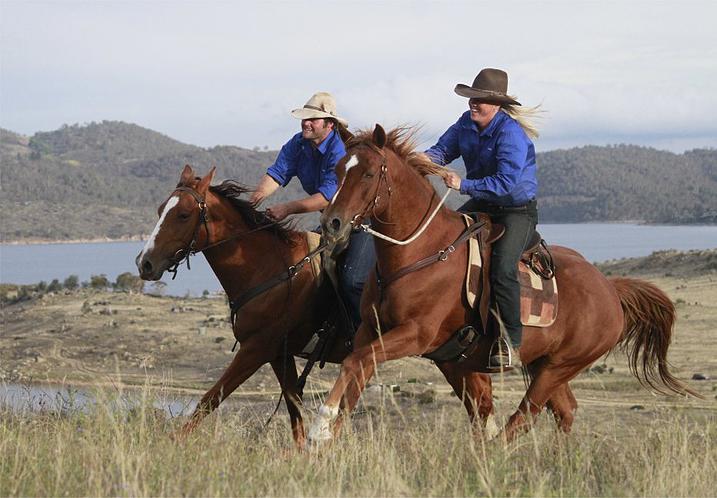
Nev Barrass from Thredvo Valley Horse Riding and his partner in business and life Linda Falconer, giving the horses a run.
Two mornings before, our first morning at Lake Crackenback, I’d tried a different kind of riding – a mountain bike ride, under the tutelage of the Cycling Coordinator, Craig Trevallion. Unfortunately I’d arrived with a pinched calf muscle (at least that’s my excuse and I’m sticking to it), so we had to take a very sedate tour of the resort and its surrounding grounds, but for me it was a stunning introduction into the beautiful landscape of the Snowy Mountains in summer, (which has been on my bucket list for years) and I was happy to potter, with the occasional dismount for hills, while more serious bike aficionados sped past us. Craig took us down to the beautiful Thredbo River, relatively calm at this time of year, and pointed out the numerous wombat holes along the way. On the way back we saw a couple of Gang Gang cockatoos, and as we went around the back of one of the clusters of chalets, a herd of happy kangaroos, sleeping in the summer sun by the lake.
The lake is the main feature of the resort, which is on 150 acres, and surrounded by the Kosciuszko national park. The only visible accommodation when you drive in are the low-rise apartments, in their muted bush-friendly colours jutting out into the lake, with a stunning background of mountains behind them. Behind the various hills are clusters of houses, all built of stone, wood and tin, nestling into their bush environment, hidden from view until you get out and about on a bike, or on Shank’s pony.
The apartment we were staying in was substantial – two large bedrooms, a spacious living and dining area, two bathrooms, a balcony and a sizeable laundry. The main bedroom opened onto the verandah, and in the living room two large windows, nestled between the fireplace, looked straight out over the water. At the edge of the lake there are free canoes, kayaks, and a paddleboard for guests to use, and there were kids of all (water-safe) ages out enjoying their water sports. And, the absolute best bit of all, once we’d got freezing cold in the lake it was only a hundred metres straight across the road to the heated swimming pool.
Heated swimming pools, fireplaces – in an Australian summer, I hear you ask – really?! Well, here’s the thing about mountain weather, it’s as changeable as a teenager’s moods, sunny one moment, glowering the next. In three days we experienced the full gamut – brilliant hot sunshine, pouring rain and one surprisingly cold night where we snuggled around the fire and drank hot chocolate. An occupation you’d normally associate with winter.
In the winter of course, Lake Crackenback is a snow resort, and although it doesn’t have skiing itself, it’s easy to get on to the ski-tube to Perisher. Even in summer there are winter reminders – signs saying ‘Please don’t walk on lake ice’, and large woodpiles outside each house or unit.
It was seductively easy to stroll between the apartment and the two fabulous eateries, the Alpine Larder and Cuisine, (which between them were responsible for pounds going on rather than coming off, despite the various forms of exercise) and I loved the easy access to the pool and gym, and last but by no means least, there is the luxurious day spa where we sampled a Moroccan hand treatment and scalp massage. Immersed in the warm, welcoming room, filled with the scent of roses and oils, it was easy to forget that just outside was the ‘weather’ – that all important subject of mountain conversation, dictating, as it does, everybody’s movements.
We were lucky because apart from the odd squall and the one, almost refreshingly cold night, the weather was clement, so much so that the even the dreaded bush flies I’d been warned about weren’t too bad. But nevertheless taking aeroguard is a good idea, and if you forget, the Activate Centre where you hire bikes, or book river rapid rides (not for the faint-hearted, or so I was told), has plenty of sunscreen and fly repellent on hand.
The Activate centre is also where you go for your ‘Segway’ experience, and if you haven’t ridden a Segway yet, if you get a chance, give it a go. Our first Segway outing was around Lake Burley Griffin in Canberra but in Crackenback it was much more exciting – the all-terrain Segways loved the hills, and within ten minutes or so, our Segway group was ready for action. It’s truly a brilliant form of exercise – all pleasure and no exertion. According to Matt Tripet, the Activate Centre manager who takes out the Segway tours, it’s something just about everybody can do. “We had an 85-year-old here once, on his walking frame,” he told me, “and he loved it. We also had a young man with cerebral palsy, who had never been able to do anything active. He came here every day just to watch, and one day he persuaded his mother to let him have a go, and he was stoked. It was the first time that he’d ever been able to move independently outside of his wheelchair.”
Perhaps, more than anything, those stories sum up what Lake Crackenback is all about. Even in the summer, you can, if you so wish, push yourself to the physical limits of endurance – there’s Mt Kosciuszko to climb nearby, there’s riding the rapids in the freezing cold river, all-day mountain bike hike, extreme bush-walking and hiking; or at the other end of the scale, you could just sit comfortably on your balcony overlooking the lake and read a book, or even paint. You could quite easily pretend you were on a lake in the Swiss Alps, as part of a European Grand Tour in days gone by, and it is very much a place to indulge in painting or photography if those are your interests. The resort even run landscape photography workshops there with acclaimed landscape photographer Michael Scott Lees, which are booked out almost as soon as they are advertised.
As for wildlife spotting, we’d been told night-time was obviously the time to catch sight of a wombat (they’re nocturnal), so we headed off one night in the car up the road towards Thredbo. We didn’t spot a wombat but we did see several herds of deer, and numerous kangaroos. (According to a local, the deer herds have built up since the devastating Canberra bush fires swept through the mountains ten years ago, when some domesticated deer were let loose. It seems a little ironic given the implacable position of the National Parks towards brumbies that the area is being overrun by deer, but that’s another story.) We drove back to the resort disappointed by our lack of wombat sighting, only to find another herd of deer on the village green, near the archery targets and trampolines, and, yes – wait for it, down there, what’s that? A real-live massive wombat, lumbering about in his passive way, his burrow only metres from the Cuisine restaurant where breakfast is served each morning. We were delighted with our ‘sighting’, and went off to bed tired but happy, as they say.
And talking of brumbies – the next morning, back at the Thredbo Valley Horse Riding HQ, Nev is telling me their best stock are either pure brumby, or part brumby. “They’re just amazing horses,” he says. “They have quiet, brave temperaments, they make great kids ponies, and they’re easy-going, as well as being sure-footed and tough.” Brumbies, he says, are his passion. “We’re part of the brumby advocacy programme, and we’ve been liaising with the National Parks to have aerial culling taken off the agenda. What we would like to do is to manage the genetics so that we keep the best of their characteristics. It’s only 50 years ago that families were still pulling brumbies off the mountains for their kids to ride to school, and we believe they are an important part of the mountain heritage.”
For visitors these days the mountain heritage is a rich experience – from the beautiful town of Jindabyne, nestled by the side of its massive lake, to a ride in the remotest mountains, or the comforts of the Lake Crackenback resort, it reminds me a little of the hill towns in India. During the height of the summer in India people leave the hot plains in droves for the cool mountains, and I’m convinced a trip to the Snowy every summer is (at least for me) an even more compelling idea than a trip to the snow.
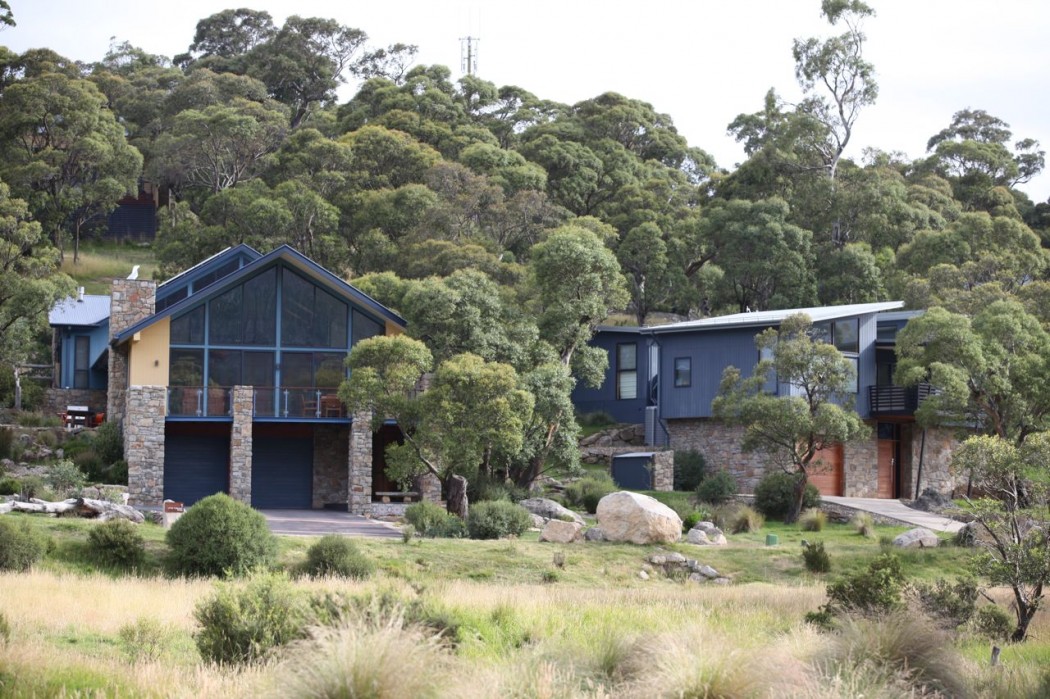

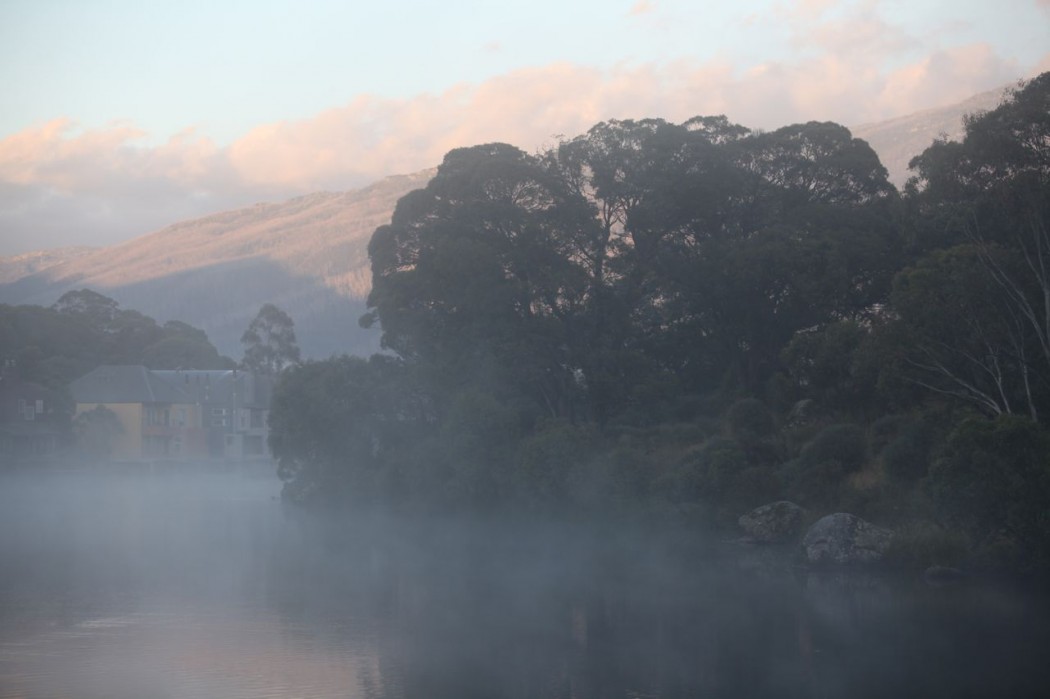
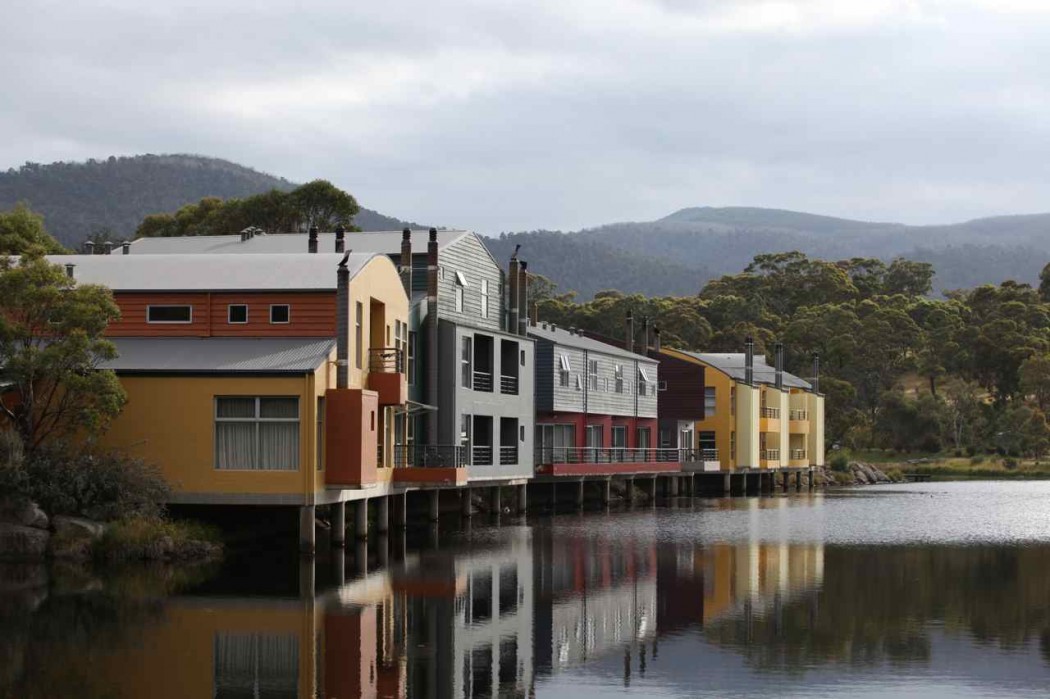
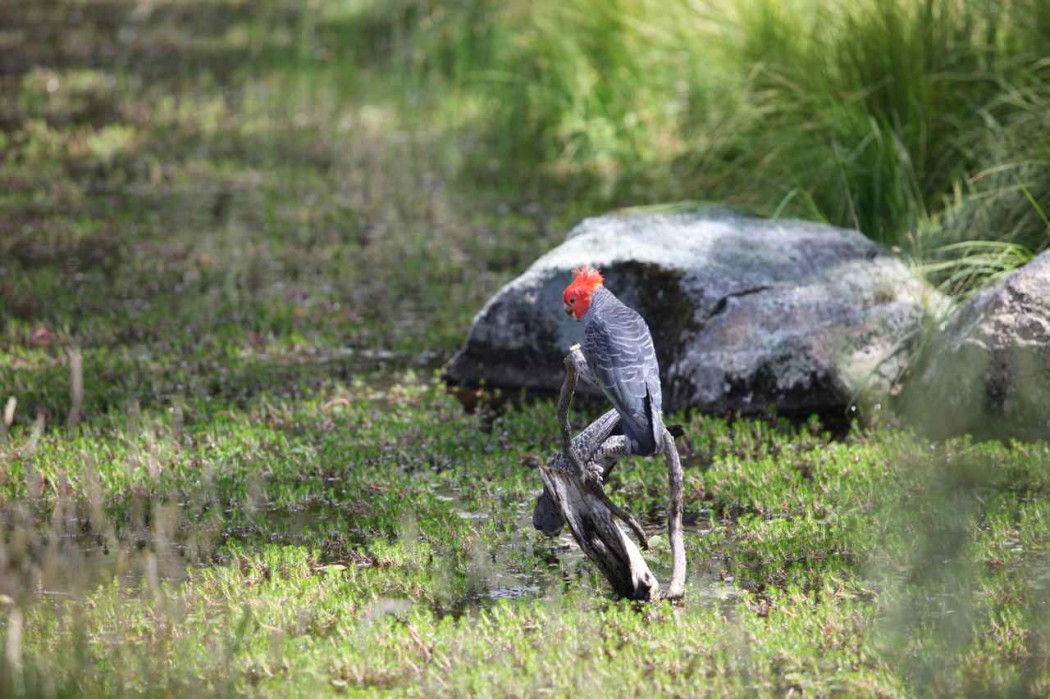
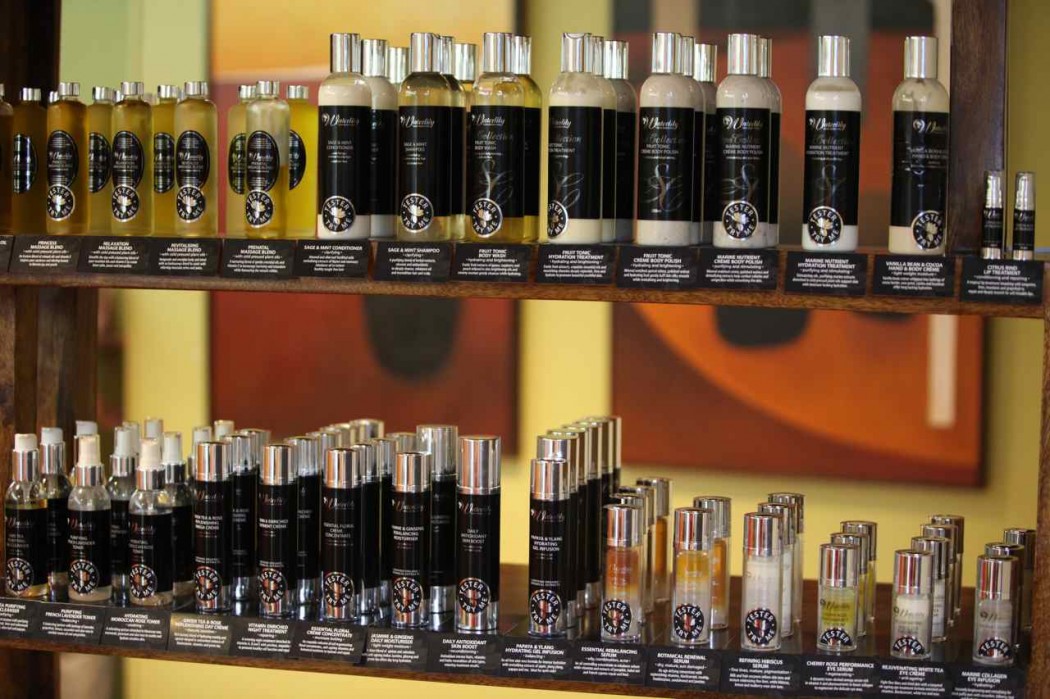

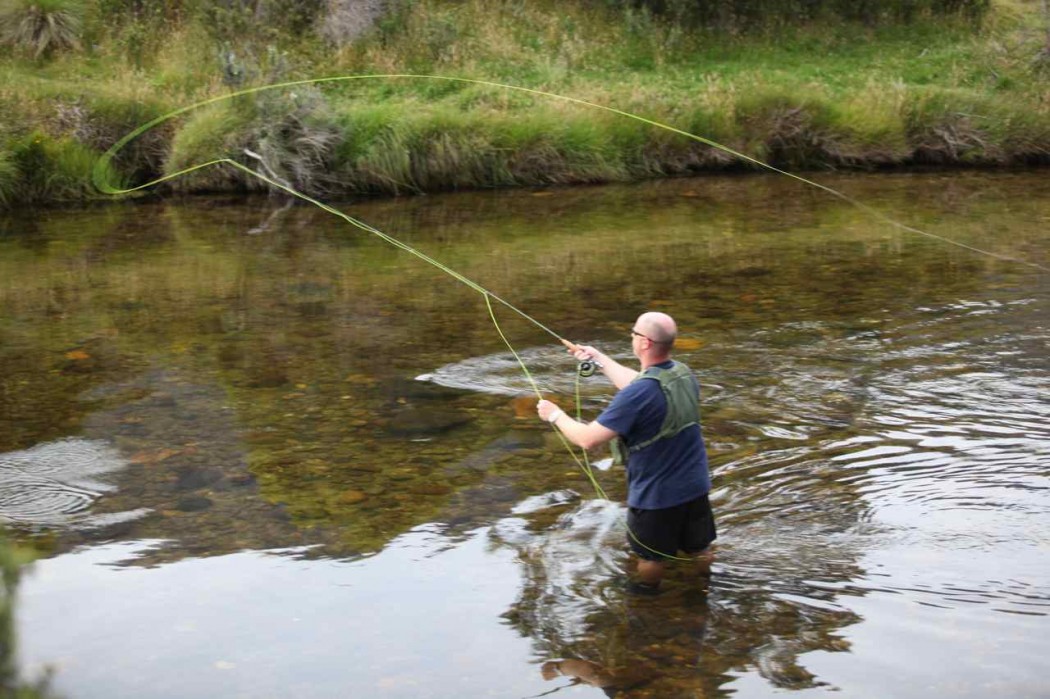



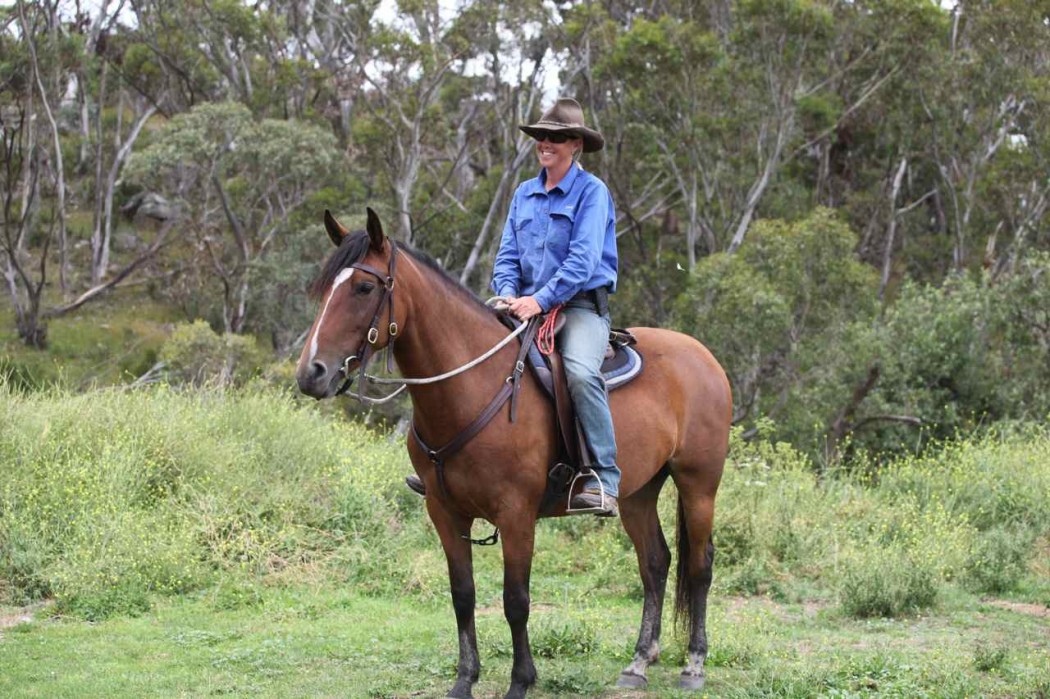
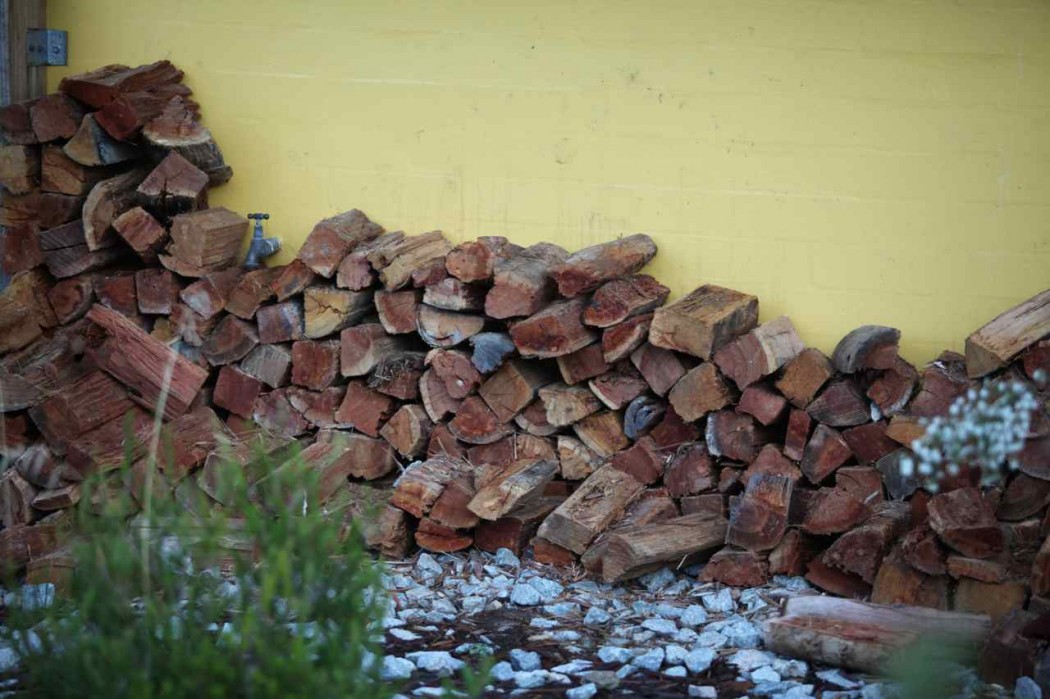
How to get there:
We flew from Ballina to Sydney, and hired a car. It takes around six hours to drive, taking it in easy stages and it is a beautiful drive. The other option is to fly to Canberra and hire a car, or the nearest airport to the Snowy Mountains is Cooma.
Contacts:
02 6451 3000
www.thredbovalleyhorseriding.com
02 6456 2142
Candida Baker was a guest of the Lake Crackenback Resort and of Thredbo Valley Horse Riding.
The post Lake Crackenback: beautiful one day magnificent the next appeared first on .
]]>











